#how do people divide their time between learning making or consuming art its so hard
Text

Boy summons meets cute
Sorry only had the energy for a rough sketch today, it's been a hard week 😭I'll redo this properly later
In the meantime, I've been typing out the "meat" of the prologue script last two days, for some reason the words aren't flowing easily atm so I've just been setting up the scenes first so I can edit the phrasing afterwards to make it all sound better.
#how do people divide their time between learning making or consuming art its so hard#anyways the mc is unconscious and floating down there#part of the reason why one of Lucien's possible nicknames for mc is angel#only because god/goddess felt too awkward to use as a nickname lol the guy literally thought you were some divine being initially#there's something to be said about the fact he thought he was doing something akin to bringing a god down to his level#yanny talks#isekai'd into the arms of a yandere duke#yanduke#yanduke lucien#lucien lockhart#yanduke art
51 notes
·
View notes
Text
Culture, parallels & meta - S3 E1
Previous season
Prologue: Vlogs (1) - Vlogs (2)
°
Zaterdag 21:43
The time lapse already showing us a string of places that will be important later, like the dark alley, the Meir with Noor’s workplace, the university neighborhood, the Scheldt river where the boys hang out, ...
Perfect parallel:
The second season starts Zoë’s POV with a (washing machine) door, whilst the third opens with a door to a party that Robbe attends.
Robbe glances back at Noor passing through the shot this episode, an action he repeats when he spots Sander in the second episode.
- A very subtle hint to where his love life may lead.
The first one starts with two unknown LGBT+ girls kissing at a party, the last episode shows two known LGBT+ boys (Sobbe) kissing at their own party.
The aerial shot through the floor to introduce us to Robbe’s POV here and the aerial shot through the roof to say goodbye to him in the last episode.
Moyo saying “No one would do you” to Aaron in this episode, Aaron realizing “No one here wants to do me!” in the last.
Where’s Wally? Noor greeting Marie, accompanied by Jana and Britt. Max dancing with Keisha in the crowd.
How ‘meta’ of you: Newsflash, yes you are!
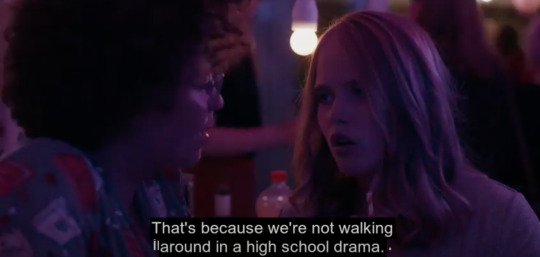
Nod to the OG:
The deliberate messy POV: following everyone that we know already and then slowly settling on the Isak version in a tub.
Robbe saying Noor looks like ‘Natalie Portman’, which is what people said to the OG Emma when they flirted with her. Everyone, except Isak, that is.
Oop, there it is, the homophobia / heteronormativity: Moyo keeps pressuring Robbe into explaining what type of girl he likes. The boys laugh it off when he answers that ‘he doesn’t have a type’.
Lost in translation: Moyo mocks Noor’s Dutch accent, making his ‘g’ and ‘st’ sound harsher, while also adding ‘hoor’ at the end - a typical word used by the Dutch to emphasize a point.
Blink-and-y’ll-miss-it: Jens is playing with the weed bag. Keisha is one of the girls that Moyo mentions as Jens’ ex-girlfriend or ex-fling. Not only did Noor nót flush the toilet, but she didn’t used any toilet paper either!
°
Zaterdag 22:44
C is for culture:
Noor rescuing Robbe on her scooter - In Belgium, you’re allowed to drive a moped or scooter once you’ve reached the age of 16. Nothing is needed if the vehicle doesn’t go above 25 km/h. If it stays between the range of 25-45 km/h and max. 50 cc, you need to pass a theoretical exam, 4 hours of driver’s ed and a practical exam to get the license. Anything other than that, has a whole new set of restrictions, types of driver’s licenses and minimum ages.
Noor and Robbe are, however, still breaking the law. As long as you’re not 18, you’re not allowed to have an extra passenger with you. Especially if they’re not wearing a helmet. (Plus they ignored a red light. Those rebels!)
“You do know that you always have to have it with you?” - The Belgian law states that everyone above age twelve, has to get an ID to identify themselves. Some might have had a Kids-ID already - for travel purposes - but that’s not mandatory. However, once you're fifteen years old, you’re obligated to carry your ID with you at all times.
Perfect parallel:
Luca being all jealous whilst staring at Noor and Robbe making out in S3, her glaring at Maud and Robbe every chance she got in the last season.
Robbe and Noor having fun on the scooter while screaming and Robbe filming their adventure in this episode. Robbe and Sander doing a similar thing, but on their bikes in a later episode.
Wink to other remakes: Robbe sporting a brown jacket. (Eliott, anyone?)
Surprise bitch, guess who: It’s Willem Chanterie, the on-set costume designer and social media production assistant!
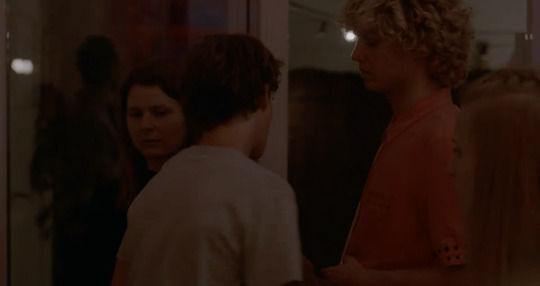
Blink-and-y’ll-miss-it: Noor has a ‘Fuck Trump’ sticker on her helmet. Robbe says “Hey, it’s red” in a very clear Antwerp accent.
°
Zaterdag 23:11
Hello from the outside: The garbage truck they sprayed, still drove around the city regularly. The art piece itself is named ‘#Genoeg mama' (= ‘#Enough mommy’). It blames the consumer society as toxic, making young people its victim.
Oopsie: Inside the graffiti den, Noor suddenly sports a tote bag with supplies, even though we never saw her wearing that in the previous shots.
Blink-and-y’ll-miss-it: Noor has black combat boots. The photographer is obviously Sander, in case you have missed that subtle clue.
°
Zondag 13:41
Lost in translation/Oop, there it is, the homophobia / heteronormativity:
“Check die pekie’s”. The word ‘pekie’ is actually Amsterdam slang for ‘beautiful girl, girlfriend’. In recent years, more and more Dutch slang are making their way into the Flemish dialect, because of the Dutch rap songs gaining popularity with the youngsters.
“Vamos, flikkers”. The word ‘flikkers’ can mean ‘wussie’ as well as a derogatory term for ‘homosexual’. Again establishing the fact that the boys use a lot of homophobic or toxic words for each other.
Robbe’s clumsiness meter: +1, him tossing the bag behind Jens instead of into his hands.
Blink-and-y’ll-miss-it: There is a football right next to the skateboards.
°
Maandag 16:04
C is for culture: “The whole art school was talking about it” -
Secondary school is divided in four sections: general, technical, art and vocational. Which section you choose can have effect on further education. In one of these sections, you pick what you want to study from your first to last year (‘directions’). That means that you have some courses purely focused on the direction and others that are obligated for everyone, regardless.
Art high schoolers can choose to go to work or study a specialization afterwards. Their coursework isn’t solely art based, there are general required courses too. That’s why some foreigners - including the Dutch - come to Belgium, since they’ll get a more rounded and higher level of art education than in their countries. ‘de!KUNSTHUMANIORA’ is the high school in Antwerp Noor goes to and is known for having students with unique styles.
Perfect parallel:
Noor waiting outside the school for Robbe and him reacting somewhat confused here, Sander doing the same and having an instantly happy Robbe in a later episode.
Robbe having no problem kissing a girl ‘as a straight guy’ in front of the gates in this episode and scared for what might happen if he kissed a boy ‘as a gay guy’ later on.
Blink-and-y’ll-miss-it: The insta caption underneath the art work says ‘An inspirational message on a Sunday! Just discovered this in Antwerp city today. Artist unknown... Can you remember when you last called on your mother?’ (That last sentence, oooofff, the symbolism!)

°
Dinsdag 14:57
C is for culture:
“Yes, mini enterprises are so chill.” - Mini enterprises are often used as a tool for Economics in the fifth/sixth year. The goal of these is to ‘learn whilst doing it’. Like the name specifies, mini enterprises are actual miniature companies set up by a group of students. During the school year, they’ll try to work together on commercializing a product. All aspects of entrepreneurship are at play here: writing a business plan, holding meetings, doing bookkeeping, marketing the product, produce and sell it, ... If the enterprise idea is good or well executed, it might even win a national prize by the company making this education formula.
“What if he contacts child protection services” - Actually, those services doesn’t really exist in Belgium. There are, however, other youth organizations for these types of things, like JAC - Youth Advice Centre, CLB - Centre for Student Guidance and the Centre for Mental Healthcare.
Perfect parallel: The boys hyping Aaron up to walk over to Amber and talk to her - yet he fails in this episode, them doing the same and he succeeds (after some fails) in the last episode.
Oop, there it is, the homophobia / heteronormativity: Jens saying “Damn, seems like someone is on his fucking period”, after Robbe snaps at him due to the difficult telephone call with his dad.
Lost in translation: Jens saying “Mijn kop staat er niet naar” (= “My head’s not standing there”) can actually mean different things: I’m not in the mood, it’s not the right time, I don't want to do it, my head’s all over the place, ... It depends on the context, on which interpretation would suit the situation the best.
Blink-and-y’ll-miss-it: The girls are all fawning all over Britt’s cellphone, so there is a good chance that they’re discussing (pictures of) her boyfriend, Sander. Also, Jana’s braces are gone!
°
Donderdag 17:13
Perfect parallel: Robbe stating that he can’t talk to his dad or he’ll fight and Zoë getting that, as she said a similar thing to an understanding Senne about her parents in S2.
How ‘meta’ of you: Ah, yes, fandom ship names in SKAM. We applaud!
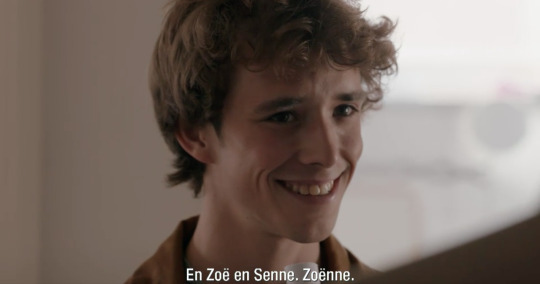
Oopsie: If you look really hard, you see that the body type and hair of Robbe’s dad, doesn’t correspond with the version waiting at the restaurant later on.
Wink to other remakes: This shot reminding you of a certain S3 trailer? 👀
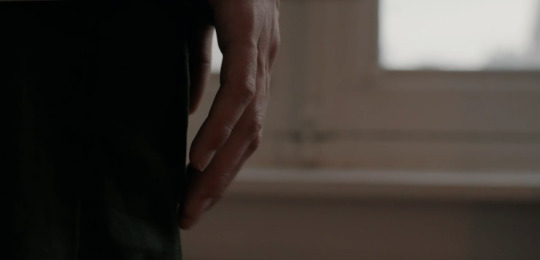
Blink-and-y’ll-miss-it: The numerous references to Zoënne’s relationship in their room (relationship pics, Senne’s guitar). The paper Milan gifts to Robbe is the written permission by his parent to live with them, as is obligated by law.
°
Vrijdag 20:04
Perfect parallel:
Senne pulling Zoë up after a kiss here, just like with their first kiss in S2.
Robbe pushing Milan away after thinking he wanted to kiss him at the party in S2, them hugging it out in after talking about it in S3.
Blink-and-y’ll-miss-it: Zoë and Milan making some healthy party snacks like cauliflower and cocktail sauce, cheese with tomatoes and salami squares. She pulls back the bottle of gin that Milan wants to steal. Senne also bought paprika and tortilla chips from Colruyt (a discount store).
°
Vrijdag 20:54
C is for culture: “Noor, Robbe’s girlfriend” - (Teen) dating culture is different in Belgium. Usually, if you have kissed, hung out, texted or just said/did something to show your mutual interest, you’d pretty much consider yourself in a relationship. It can go from 0 to 100 very quick. Unless there is, of course, an agreement that what you’re doing is no such thing. Also, nobody really ask you to be their gf/bf. It just implied or stated to their family or friends.
Perfect parallel:
A reluctant Robbe pushing himself to do stuff to Noor (playful dancing, kissing, riling her up) as far as putting his hands on her bra here. A totally different, excited Robbe not even thinking twice about doing these things to Sander, even licking his nipple during their reunion.
Noor pushing Robbe on the bed and climbing over him, whilst Robbe looks all sad in this episode. Him pushing Sander on the bed and being happy as Sander crawls over him during their reunion.
Oop, there it is, the homophobia / heteronormativity: Robbe tries to convince himself into liking heterosexual sex with Noor and fake laughs with his friends about having it.
Where’s Wally? Keisha laughing with Amber and later dancing with Marie.
Blink-and-y’ll-miss-it: Jens is talking to Senne. The decorations behind Milan saying ‘Welkom Robbe’ (= ‘Welcome Robbe’). Noor has a beautiful tattoo of a pin-up girl covered with butterflies on her lower arm.

124 notes
·
View notes
Text
Souly Damned Saturdays!~
🌼Hello everyone! I am excited to share the next SD Saturday! Today is going to be how the Infernal Realm is set up and a profile on one of my favorite boys, Val. This is going to be a huge one! Let’s get into it! If you have any questions please ask away! There is so much to this world and it’s characters that I don’t want to overwhelm people.
*again stunning chibi of my boy Val by @little-noko >////< I love it so much*

~Prince Profile:~
True Name: Valruth
Alias Names: Valentine (Val)
Nicknames/Titles: The Bloodstained Beast
Soul Flower Type: Rose in half bloom
Color Type: Ruby with burnt petals
Infernal Hierarchy: 2nd Prince of Lust
Age Order: 5th Oldest
Familiar Form: White Maine Coon/ (Hellcat)
True Form Appearance Description:
~Skeletal in appearance
~Prominent fangs (spiked teeth in true form)
~Ruby pointed tongue
~Black horns that are reminiscent of the stereotypical devil
~Skeletal claws
~Clawed feet
~Spaded bone tail with charcoal gradient
��~Golden Fang
~Bone damage (cuts) on forearm, ribs, spine, shoulder blade
~Bone and black feather wings (mix)
Human Form Physical description:
~Hair color: White/ cool platinum
~Hair style: slicked back (before modern and reminiscent of the 1920′s)
~Eye color: Ruby/ reddish brown
~Skin tone: Pale
~Contract symbol mark placement: his left shoulder blade
~Height: 5′9
Special Abilities or Powers:
~Mind reading
~Can pull out deepest desire
~Dream walking
~Mental suggestion
~Levitation
~Teleportation
~Fire element
~Veritas (forces those under his influence to tell the truth)
~Lust touch
~Blood vitality/ power
~Servitude
~Calming/ paralysis touch
(more below the cut!)
~SD Q AND A (These are all questions from you! Specifically those in my server):~
1. What is vals usual duties as a prince of hell? Does he have hobbies he enjoys doing? Does he even like humans if so what does he like about them?
🔥Val has less duties as Costello because even though he is a prince he is not the head of that Kingdom. Though to be fair Costello doesn't really mind doing the work it keeps his mind occupied. Mainly it's Val's job to deal with Coven direction/communication.
I mean he has hobbies but uh... those are not appropriate to mention. Remember Val's cardinal sin is lust X'D He does enjoy music so he will spend time learning different musical styles or instruments. All in all he is pretty laid back and enjoys a good time. He’s a party boy, but he will be serious if needed.
Costello's position allows Val to be kind of a hedonist. His other job is based in contracts. Most Princes don't directly deal with humans unless circumstances allow due to their past history. It's his job to essentially make sure that quotas are being met. Let's just say he prefers the Mortal Realm because he loves messing with mortals.
2. Does Val prefer like manipulating people or playing pranks more?
🔥 He enjoys manipulating people.
3. How does it feel for Val to take another's life? What did it feel like the first time?
🔥 When he first Fell he struggled with the duality of his Clelestial/Infernal blood. It's the concept of the first life he took was hard on him but the moment he looks at the blood he essentially breaks. After that he gains the nickname of Beast because he revels in the kills. Eventually, he earns the "title" of the Bloodstained Beast which is where Beast comes from.
4. Is Val overall sure of himself or does he struggle with loads of insecurities?
🔥He is sure of himself outwardly but alone not so much. Like I said before the majority of the brothers struggle with what they used to be and what they have become. His father's influence pushed his mind to justify the horrible things he has done. When Darrius is locked away the brothers have to come to terms with the monsters they have become.
5. Does Val ever suffer from depression?
🔥I wouldn't call it depression. It is not that severe. It is more like self doubt or regret.
6. What does it mean to be "alive" for Val?
🔥Unlike Infernals born in that realm, the brothers still have their Celestial souls but they are badly corrupted. Being alive for him is feeling the emotions that he used to when he was a Celestial. Think of their corruption as losing a sense of self. Most think that his "highs" come from drinking, pleasure, and the usual sinful fair but that’s not entirely true.
7. Does Val struggle with who he is?
🔥It depends on what part of the timeline. In the beginning he struggles a lot until he snaps but then doesn't care at all as if his original soul has gone numb. Over the centuries he does begin to mellow out and eventually when he meets Eve he changes his tune. Even before their meeting he is far more self conscious.
8. Do Val’s emotions of himself ever reflect on others or does he keep them tightly wound?
🔥He keeps his emotions tightly wound unless he is with someone he trusts and by god is it hard to gain any of these boys trust. They were betrayed by their father and their other family... so they have major abandonment and trust issues.
9. Has there ever been a time where Val considered "love" over "lust"?
🔥Yes! In fact that is what he used to be. He was a Celestial of love and affection. It is one of the reasons that I made his alias name Valentine. Eve is the love of his life and he treats her as such.
10. If the brothers get their hands on souls what do they do with them? Will each prince treat souls differently from one another?
🔥Soul wise they can consume souls for their power, which they are already ungodly powerful already. The only caveat to that is that it corrupts their souls further. Sometimes those souls end up tormenting them for a while before they fade away. Each one has a different effect depending on the soul itself not so much the one who consumes it.
11. What happens to changelings that die? Do they become infernal beasts/imps? or does something else happen?
🔥They essentially meet a permanent end, however, I should mention that they kind of get recycled in a way? Think of it as giving the energy back to the realm. It strengthens it. There are various artifacts and runes of great power strewn throughout the realm that are powered by dead Infernal life forces.
~The Infernal Realm Info~
General Structure:
The Infernal Realm is divided into an odd configuration that would imply something along the lines of Dante’s Inferno but the rings do not consecutively branch out. In the center the Infernal Palace in the capital city of Eden rests surrounded by the homes and residences of the Infernal elite. The ring outside those gates consists of five kingdoms; Lust (being the largest of the five), Pride, Greed, Envy, and Wrath.
The outer most ring consists of the other 2 kingdoms; Sloth and Gluttony. Lastly the outer “walls” or ring is a wasteland for lost souls that neither belong in Heaven or Hell. This is what most would consider to be Purgatory but that would be factually incorrect. The gateway to purgatory is hidden within this land's monochrome and misty forests. There are also rumors that a gateway to the other realms also lies in these woods safely guarded by Infernal Beasts with loyalty to their King. There is in fact a portal to the mortal realm in each kingdom and heavily guarded by whoever each Prince sees fit.
In the beginning of their banishment the Princes began to build on the outskirts of the realm working their way inward this causes an influence on the architectural influences. The further out the kingdom the the more ancient. SO each Kingdom is influenced by a specific period in time. This also coincides with the technology seen in the kingdom. The exception are the Prince’s castles.
An example of this is Gin’s Kingdom of Sloth. His kingdom is heavily ancient Egyptian based but he is obsessed with the mortal realm so he still has technology but you can only find it in his “castle”. You wouldn’t see that kind of tech outside those walls. In addition each kingdom is divided by a dangerous wasteland in order to deter souls from trying to escape kingdoms.
The only means of travel is a railway that travels from kingdom to kingdom. The tracks move and shift (kind of like the stairs in Harry Potter) to the destination that is required. One needs a ticket otherwise you can’t get on the railway and this is generally used by Imps or the occasional changeling if they are given permission to do so.
Darrius’ Prison (The Wasted Hollow): Darrius is locked in a very specific prison stuck in between the Infernal and the Mortal Realm. It's a cushy small cage that can only be opened by the power of the 12 Princes. There is not a living soul in it except for him. This place dampens his abilities but they all cannot be contained. He has imparted his influence in multiple ways by reaching out to mortals and demons alike. Under his instruction they have created different cults. They are currently clandestine under the New Order and the New Mortal Realm.
Note: If it was possible to get an aerial view of the entire Infernal Realm it would look very similar to a contract symbol or in essence a seal. This is due to the railway system that connects the kingdoms together. It’s a relatively new future as the millennia have progressed but the formation of these lines is in fact in the shape of a pentagram.
~The Kingdoms (7)~
Lust (Inner Ring)- The kingdom that used to be ruled by the current King of the Realm. The hierarchy works that each kingdom rules over a certain sin committed by those punished. The closer that they are to The Capital the richer and more prosperous. It’s era of influence is the Roaring 20′s and that can be seen in it’s more art deco styled architecture and fashion sense.
The lust kingdom is ruled by Costello who is the crown prince and following that is Val. He is a prince as well but uncrowned to one of the major kingdoms (he could honestly care less).The kingdom of lust revels in opulence and is known for its material wealth and the demons here tend to be debaucherous and are known for their slave/pet dealings. In this kingdom they tend to be overly needy causing them to sate their desires with damned souls or each-other.
It is well known that nothing can really saite these demons appetites for pleasure. They do as they will but continue to follow under the rules set forth by the King. The demons of this kingdom however tend to get away with more considering their kingdoms standing. Lust also does not just account for physical pleasure but lust for things such as wealth or power are prime examples. It is rumored that the two brothers appear to be opposites in their handling of the sin. Costello being more about possession and passion while Beast is more the stereotypical lust. Out of all the kingdoms this one seems to be the “best” one to be sentenced to especially if you find yourself at the feet of its rulers. The humans here are usually taken care of quite nicely though it is also rumored that some of those souls in question do not belong in Hell at all.
Appearance wise the Lust kingdoms Castle is paved with marble and gold. It is near spotless excluding wealth and grandeur. The massive walls that hide the Castle from view are covered in thick lush green vines and flowers. They have lace like porticos that spill a strange liquid from snake-like mouths. It is said that a human that even consumes a drop of it will be subject to their demon masters will for eternity. A strong manipulative love potion in essence. The Palace gardens are almost as if they were taken from the Garden of Eden itself which is entirely possible. The further away from the epicenter of the city becomes less ostentatious though not dilapidated by any means. Many of the Infernal elite live in this kingdom commonly.
Pride (Inner Ring)- The kingdom of Pride is ruled by Carthus and Dusk which resides in the inner ring. As such it too exudes opulence at its center. The Kingdom supplies and trains those for the Capitals personal guard as well as the demons that are considered soldiers. This is also the Kingdom of the tainted. Those that are not quite demon but also not quite human. A long time ago when demons walked among the humans in the first mortal realm they wrecked havoc. The Princes of Pride manipulated humanity so much so that they began to turn them away from their old religions so that they would worship them instead.
In turn the two brothers (along with the Princes of the Kingdom of Greed) toyed with human souls creating Infernal half breeds. What humanity calls vampires, werewolves, and so forth. The humans began to decline at rapid numbers since those of half Infernal blood easily hunted the weak. Now they span the wasteland of Purgatory sometimes finding themselves in the Infernal or Mortal Realms.
Humans of high status on earth are also subjected to the same kind of torment they put on others in the worst way possible. Dictators, murderers and the like in this kingdom. It is a series of mind altering and psychologically torturing pathways and darkness. The only ones that are able to navigate this kingdom are those born from it’s depths or the Princes themselves as Dusk is the one that devised this horrifying MC Esher maze. It is influenced by the Late Victorian and Edwardian period. This kingdom’s seasons and magically produced light source can vary but the majority of the time the skies resemble twilight fading into darkness as you get further away from the castle.
Wrath (Inner Ring)- The Kingdom of Wrath is the kingdom of War and bloodlust ruled by Sokan and Azrin. This is the kingdom known as The Cell unlike the kingdom of Lust, Wrath only shows off it’s splendor near it’s castle and some of the surrounding areas. It is mostly utilized as a giant torture pit. This is where souls are sent as punishment of the most severe crimes and tortured mercilessly sometimes torn to shreds only to be revived.
Their leader is a ruthless warden of sorts making sure that everyone obeys the laws both set forth for demon or soul. Demons sentenced to exile are also detained here in this confusing catacomb prison. It is filled with deadly traps and pitfalls to prevent escape as well. The human souls usually sentenced here were the warriors that committed atrocities without a second glance at the innocent. Those that killed children in the name of the king is an example of this.
The Cell is also where souls are twisted beyond recognition and where most new demons are made. In this world demons are made not born and those corrupted souls become the new generation. It could take years. It could take centuries but being thrown into The Cell is a sure fire sentence into Infernal rebirth.
There are two rulers of this kingdom and as such two types of punishments. While Boss rules over the Pit, Azrin is his little torture aficionado. Those sentenced are usually the type of killers that were mentally undone. Ones that took a sick twisted pleasure in their artistry. Those are usually brought from the outside. Their ruler, Azrin, is what one might call… unhinged at best. They are known for their experimentation attempting to twist mortal souls into whatever is desired... following in the footsteps of his older brothers.
Greed (Inner Ring)- The kingdom of Greed is unlike any other kingdom as it houses an insurmountable number of souls within it (even if they don’t last long). It’s influence is the High Gothic Period, just think Dracula’s castle and forest. The ruler of Greed, Crimson, is a ruthless warlord with an unusual thirst for blood and not in the war hungry way. It’s second Prince, Grimm, enjoys torturing souls himself and will generally set up elaborate hunts to that end.
It’s alternate title is that of the Kingdom of Blood. Those unfortunate souls forced to end up in such a horrible kingdom will find themselves subject to experimentation or unwinable hunts. Crimson was the one that started all of this half breed creation along with Carthus and Dusk. Though there were many creatures that came about through this experimentation Crimson and Grimm are specifically tied to two infernal blooded hybrids. The two brothers are most likely where the vampire and werewolf mythology stem from.
Both brothers continue to play with their human “toys” as they did so long ago. They enjoy the thrill of hunting down those sentenced and revel in their success. Crimson prefers the opulence and riches that his sin provides while Grimm is more down to earth. It may account for his more bestial nature as he has a similar animalistic inclination like that of his youngest brother Ouro.
Envy (Inner Ring)- This is the kingdom that trains and outsources spies as well as assassins. Demonic hitmen used to gain political power among their respective kingdoms. They are known for their thieves mostly stealing from their neighboring kingdom of greed, specifically souls. Envy is known as the shadow kingdom usually housing those souls of the occult and black magic. Those that tried to obtain the unobtainable through magical or demonic means like that of Hedge Witches.
Sanneth does not take kindly to this as these souls are tortured for all eternity forced to relive and conjure their own worst fears or transgressions. A never ending nightmare would be an apt description. Like his younger brother Dusk, Sanneth does not embrace his sin as much as the others. His abilities reflect his more Celestial blood but alas he is a Prince and therefore a kingdom he must rule.
Sanneth also happens to be the twin brother of Carthus and the two are constantly at odds. He believes that they can conduct their “duty” without fulling turning into monsters while Carthus revels in his corruption. The 4th eldest prince’s envy could stem from his desire to return to how he once was. The castle rests in a season of eternal Spring influenced by the Japanese Edo period.
Gluttony (Outer Ring)- Those that are placed into this kingdom as punishment are subjected to torture of starvation and thirst. The princes castle is surrounded by a never ending desert with no hope for food or drink. Souls are forced to starve wandering this desert for the rest of eternity. The demons banished into this place feast on mortal corpses that fall, tearing them to pieces like scavengers.
When the sun sets these mortals end up back where they started in one piece having to endure the same torture over and over. Ouro the ruler of his kingdom does not do much in the way of duty. He tends to delegate his jobs to other lower level demons. If a mortal manages to cross the desert the torture is with standing. Any food will turn to ash in their mouths and any water will burn the throat. It is an endless never quenchable thirst and hunger. It’s influence is that of Mesoamerica such as the ancient Maya and Aztec civilizations.
Sloth (Outer Ring)- Sloth is the final kingdom before the Outer Ring. It is “ruled” by Prince Gin though no one could actually tell you what it takes to maintain the kingdom as he tends to delegate everything to his Dukes.
The souls here are never allowed to rest, forced to work the land for food production. Which is hilarious because food does literally nothing for demons. Ok hilarious in a cruel sick way. The Infernal Princes do like to have their feasts and lavish parties but that food is very different. In essence mortals are forced into a constant state of fatigue. Never able to drink, eat, or most of all sleep.
Gin tends to be selectively lazy but he has a fascination with the modern mortal world and tends to spend a lot of his time acquiring items from there. The poor boy has insomnia so he rarely sleeps since he is so enthralled with his game systems. He is very much a pop culture nerd at times and if you can get on his good side you will find that is probably one of the softer of the Princes. He likes a good time, oh and junk food... lots of junk food. The influence for this kingdom is ancient Egyptian as alluded to earlier since both of the Outer Ring Kingdoms are surrounded by a seemingly never ending stretch of desert.
(That’s it for this week! I hope that gives you all kind of an idea how the Infernal realm works. This is jus the basics and if people are more interested in this I will go into more detail. That is what the ask box is for!)
<< PREV | FIRST | NEXT >>
#Souly Damned#SD Saturdays#worldbuilding#info#askbox is open#original content#demons#angels#Valruth#Valentine
25 notes
·
View notes
Text
8 Leading Women In The Field Of AI
New Post has been published on https://perfectirishgifts.com/8-leading-women-in-the-field-of-ai/
8 Leading Women In The Field Of AI
These eight women are at the forefront of the field of artificial intelligence today. They hail from … [] academia, startups, large technology companies, venture capital and beyond.
It is a simple truth: the field of artificial intelligence is far too male-dominated. According to a 2018 study from Wired and Element AI, just 12% of AI researchers globally are female.
Artificial intelligence will reshape every corner of our lives in the coming years—from healthcare to finance, from education to government. It is therefore troubling that those building this technology do not fully represent the society they are poised to transform.
Yet there are many brilliant women at the forefront of AI today. As entrepreneurs, academic researchers, industry executives, venture capitalists and more, these women are shaping the future of artificial intelligence. They also serve as role models for the next generation of AI leaders, reflecting what a more inclusive AI community can and should look like.
Featured below are eight of the leading women in the field of artificial intelligence today.
Joy Buolamwini: Founder, Algorithmic Justice League
Joy Buolamwini has aptly been described as “the conscience of the A.I. revolution.”
Her pioneering work on algorithmic bias as a graduate student at MIT opened the world’s eyes to the racial and gender prejudices embedded in facial recognition systems. Amazon, Microsoft and IBM each suspended their facial recognition offerings this year as a result of Buolamwini’s research, acknowledging that the technology was not yet fit for public use. Buolamwini’s work is powerfully profiled in the new documentary Coded Bias.
Buolamwini stands at the forefront of a burgeoning movement to identify and address the social consequences of artificial intelligence technology, a movement she advances through her nonprofit Algorithmic Justice League.
Buolamwini on the battle against algorithmic bias: “When I started talking about this, in 2016, it was such a foreign concept. Today, I can’t go online without seeing some news article or story about a biased AI system. People are just now waking up to the fact that there is a problem. Awareness is good—and then that awareness needs to lead to action. That is the phase that we’re in.”
Claire Delaunay: VP Engineering, NVIDIA
From SRI to Google to Uber to NVIDIA, Claire Delaunay has held technical leadership roles at many of Silicon Valley’s most iconic organizations. She was also co-founder and engineering head at Otto, the pedigreed but ill-fated autonomous trucking startup helmed by Anthony Levandowski.
In her current role at NVIDIA, Delaunay is focused on building tools and platforms to enable the deployment of autonomous machines at scale.
Delaunay on the tradeoffs between working at a big company and a startup: “Some kinds of breakthroughs can only be accomplished at a big company, and other kinds of breakthroughs can only be accomplished at a startup. Startups are very good at deconstructing things and generating discontinuous big leaps forward. Big companies are very good at consolidating breakthroughs and building out robust technology foundations that enable future innovation.”
Rana el Kaliouby: CEO & Co-Founder, Affectiva
Rana el Kaliouby has dedicated her career to making AI more emotionally intelligent.
Kaliouby is credited with pioneering the field of Emotion AI. In 2009, she co-founded the startup Affectiva as a spinout from MIT to develop machine learning systems capable of understanding human emotions. Today, the company’s technology is used by 25% of the Fortune 500, including for media analytics, consumer behavioral research and automotive use cases.
Kaliouby on her big-picture vision: “My life’s work is about humanizing technology before it dehumanizes us.”
Daphne Koller: CEO & Founder, insitro
Daphne Koller’s wide-ranging career illustrates the symbiosis between academia and industry that is a defining characteristic of the field of artificial intelligence.
Koller has been a professor at Stanford since 1995, focused on machine learning. In 2012 she co-founded education technology startup Coursera with fellow Stanford professor and AI leader Andrew Ng. Coursera is today a $2.6 billion ed tech juggernaut.
Koller’s most recent undertaking may be her most ambitious yet. She is the founding CEO at insitro, a startup applying machine learning to transform pharmaceutical drug discovery and development. Insitro has raised roughly $250 million from Andreessen Horowitz and others and recently announced a major commercial partnership with Bristol Myers Squibb.
Koller on advice for those just starting out in the field of AI: “Pick an application of AI that really matters, that is really societally worthwhile—not all AI applications are—and then put in the hard work to truly understand that domain. I am able to build insitro today only because I spent 20 years learning biology. An area I might suggest to young people today is energy and the environment.”
Fei-Fei Li: Professor of Computer Science, Stanford University
Few individuals have left more of a mark on the world of AI in the twenty-first century than Fei-Fei Li.
As a young Princeton professor in 2007, Li conceived of and spearheaded the ImageNet project, a database of millions of labeled images that has changed the entire trajectory of AI. The prescient insight behind ImageNet was that massive datasets—more than particular algorithms—would be the key to unleashing AI’s potential. When Geoff Hinton and team debuted their neural network-based model trained on ImageNet at the 2012 ImageNet competition, the modern era of deep learning was born.
Li has since become a tenured professor at Stanford, served as Chief Scientist of AI/ML at Google Cloud, headed Stanford’s AI lab, joined the Board of Directors at Twitter, cofounded the prominent nonprofit AI4ALL, and launched Stanford’s Human-Centered AI Institute (HAI). Across her many leadership positions, Li has tirelessly advocated for a more inclusive, equitable and human approach to AI.
Li on why diversity in AI is so important: “Our technology is not independent of human values. It represents the values of the humans that are behind the design, development and application of the technology. So, if we’re worried about killer robots, we should really be worried about the creators of the technology. We want the creators of this technology to represent our values and represent our shared humanity.”
Anna Patterson: Founder & Managing Partner, Gradient Ventures
Anna Patterson has led a distinguished career developing and deploying AI products, both at large technology companies and at startups.
A long-time executive at Google, which she first joined in 2004, Patterson led artificial intelligence efforts for years as the company’s VP of Engineering. In 2017 she launched Google’s AI venture capital fund Gradient Ventures, where today she invests in early-stage AI startups.
Patterson serves on the board of a number of promising AI startups including Algorithmia, Labelbox and test.ai. She is also a board director at publicly-traded Square.
Patterson on one question she asks herself before investing in any AI startup: “Do I find myself constantly thinking about their vision and mission?”
Daniela Rus: Director, MIT’s Computer Science and Artificial Intelligence Lab (CSAIL)
Daniela Rus is one of the world’s leading roboticists.
She is an MIT professor and the first female head of MIT’s Computer Science and Artificial Intelligence Lab (CSAIL), one of the largest and most prestigious AI research labs in the world. This makes her part of a storied lineage: previous directors of CSAIL (and its predecessor labs) over the decades have included AI legends Marvin Minsky, J.C.R. Licklider and Rodney Brooks.
Rus’ groundbreaking research has advanced the state of the art in networked collaborative robots (robots that can work together and communicate with one another), self-reconfigurable robots (robots that can autonomously change their structure to adapt to their environment), and soft robots (robots without rigid bodies).
Rus on a common misconception about AI: “It is important for people to understand that AI is nothing more than a tool. Like any other tool, it is neither intrinsically good nor bad. It is solely what we choose to do with it. I believe that we can do extraordinarily positive things with AI—but it is not a given that that will happen.”
Shivon Zilis: Board Member, OpenAI; Project Director, Neuralink
Shivon Zilis has spent time on the leadership teams of several companies at AI’s bleeding edge: OpenAI, Neuralink, Tesla, Bloomberg Beta.
She is the youngest board member at OpenAI, the influential research lab behind breakthroughs like GPT-3. At Neuralink—Elon Musk’s mind-bending effort to meld the human brain with digital machines—Zilis works on high-priority strategic initiatives in the office of the CEO.
Zilis on her attitude toward new technology development: “I’m astounded by how often the concept of ‘building moats’ comes up. If you think the technology you’re building is good for the world, why not laser focus on expanding your tech tree as quickly as possible versus slowing down and dividing resources to impede the progress of others?”
From AI in Perfectirishgifts
3 notes
·
View notes
Text
Gaslighting, Otherness, and Gospel
Experiential literature.
The Gospels are not persuasive. Although Matthew may in places attempt to fit Christ into Jewish prophecy in order to place him into the context of the messiah long-awaited, that is at most something necessary, a foundation for the actual argument, and an argument which does not appear explicitly. There is no recounting of facts, there is no framing of what exactly one should do in response to reading them. It feels to me less like they are trying to persuade you about something, and more that they are inviting you into something.
I feel that most acutely in the Gospel of Mark, with its immediacy, and in the Gospel of John, with its intensity of emotion. These are works of experiential writing which try to bring you into the experience that the apostles shared. They cannot name how this will transform you, but they hope that it might, by the experience of it, do so nonetheless, as it transformed each of them in their individual ways. If we imagine the foundation of the synoptic gospels being records of the sayings of Jesus, this is all the more clear: not statements of fact to be absorbed, but the experience of listening at the feet of Jesus, and feeling flashes of insight, glimpses of the Kingdom, as he spoke.
Perhaps the religious as a whole is of that nature, an experiential reality which can be glimpsed, but not measured and recorded — but which can, perhaps, be shared.
I find that in the letters of Paul, certainly, as I enter into his struggle to lead Christian communities, and feel the sense of responsibility that he felt, by virtue of the love that he felt for each and every person. I hear not only what he said to them, and how he told them to live, but what it felt like to say those things, to implore them. What his hopes were, so much more so than his teachings. What he taught is only sometimes relevant to my life, and the lives of those with whom I preach and teach, but the posture of love and hope and concern, of steadiness and urgency, of patience and frustration: that is always relevant. So, too, to imagine what it felt like to be in those communities, and to hear Paul’s letters written to us and our fellow-travellers in this strange and difficult way.
Much of the religious record, indeed, is concerned with the efforts to convey the experience of something which may be universal, or may be profoundly rare, but which nonetheless cannot be collapsed down into a set of facts and figures. The bush which burns and is not consumed. The flood. Ezekiel’s calling. John’s revelation. The experience of being Jonah. The experience of being the crowd which calls for the execution of Christ. We enter into and share of these things, however familiar or foreign they may be. We gain a facility with inhabiting them, whether to find our way to awe, or to gain the conviction required to decide to live differently.
Enlightenment and disappointment.
I am very much a child of the enlightenment, although I am at an age where it feels increasingly preposterous to call myself a child of anything. I was, though: I grew up surrounded by personal computers, in a household led by a deeply gifted engineer who had worked on the Apollo program. My family talk about how I was programming using the macro language of an early text editor before I had even entered school. I tell that story, too, as part of the foundational mythos by which I continually recreate my own life. It captures something very real about who I was raised to be, and perhaps hints at some more elusive things about who I deeply am.
I am no great and gifted historian or philosopher of the Enlightenment, but it seems a meaningful referent for that upbringing. I was taught to see the world in an exacting and scientific way, and to reject things which were mere superstition, or otherwise irrational. I was formed to master language, not as a way to communicate with other people, but as a way to be precise about ideas and facts. If something was true, there would be some evidence for it which could be clearly described, and provably measured — and if it was true, it would be true always and everywhere.
That is a very narrow world, more narrow than the world of Hume or Locke or Spinoza — a kind of fundamentalism of objectivity, in which there was very little room for a person to live, for a person to exist as a subject, rather than an object. The ideal human being was a data logger, not even a flawed individual striving after objectivity.
It grated at me that I could not determine whether other people experienced colours as having the same perceptual quality as I did. I was acutely sensitized to the ways in which adults seemed to be arbitrary and capricious, and to engage in proof by assertion of the legitimacy of all their rules. There was no rigour, no structure which really captured the rough edges I continually ran up against in the course of living. Indeed, I had my own experiences rejected as fabrications and lies, even experiences that would have been readily measurable, like allergies that were present from my early life, and instantly recognized once I sought diagnosis as an adult.
This created all kinds of inward and outward problems. I doubted my own reality, to the point of living with debilitating panic attacks in which my own perspective seemed to fight for control with some other realm of possibilities. I could not trust the ground beneath me, because what if some hidden law, some unknown variable, were to govern it to give way instead. I felt swallowed up in the ocean-like waters of the universe itself, as though there was no way for me to get to dry land, to real life, to the right plane of existence. I had to work hard to learn that the world, and I, would continue to exist as I went from one point to another, rather than disappearing in a kind of unstable variation of Zeno’s paradox transposed into the cosmology of simulation theory.
This introjected doubt was projected onto the world around me, too. How could I know whether what someone else said was true? How could I trust anything which happened outside of my view? Hell, how could anyone know anything?
The politics of doubt.
This pervasive hermeneutic of suspicion was not unique to my objective fundamentalist upbringing. The authority of measurement is almost unquestionable in our society, which prefers technocracy to anything more sentimental. While public debate may take on the rhetorical character of aesthetics, we find a way to turn our rules for action into something you can quantify. You will always be able to know whether or not you can cut down a tree, or dump waste into a waterway, by using a published table of figures. You don’t have to stop and think about whether you should or not, which might be unsettling and subjective, only whether you’re allowed to, which is knowable.
In the grip of my epistemological wounds, I found as a teenager that a certain kind of defiant libertarianism held enormous appeal. Political correctness was a favourite topic in the discourse I was exposed to at home and at school, which is perhaps the ideal target for this politics of sneering contempt and doubt. How was anyone supposed to know what they could or couldn’t say? Who got to decide, who got to make the list? How could someone else tell you not to say a word when they couldn’t give you criteria for deciding so? Where was the proof that words did harm?
You could prove to someone that words were meaningless by shouting the words you weren’t supposed to say, over and over. It’s just a sound, after all. It only signifies something if you let it, and it’s only dangerous if someone does something real and measurable while they happen to be saying the word, at which point the word doesn’t much seem to matter, does it? So you make the sound again and again, while behaving in an upright and respectable manner in all other respects, so that you are above reproach. Whoever hears it and feels pain has inflicted the harm upon themselves.
It’s one of those things that’s true as far as it goes, but doesn’t actually lay claim to as much as it thinks it does. It’s like treating science and religion as overlapping magisteria, as though their claims and methods existed within the same realm and spoke to the same things at all times and in all places. We recognize that doing that does violence equally to religion and to science, because the tools of one are not the right tools for the other. God exists beyond measure, but if God is calling us to build an ark, we had better use tools and measures to guide its construction, and not our ecstasy and wonder. Science sinks in the deep water of religion and vice versa.
This doubting suspicion loves not only to attack what seems arbitrary to it, but to mistake subjectivity for a compromise of objectivity. Hume thought that art was not entirely objective, but that an art critic could, with sufficient dedication, strive for objectivity in how they engaged with their work. You can use your subjective experience to serve something other than your personal biases, albeit imperfectly.
However if someone claims a subjective experience which is outside of the sort of teenage libertarian I was, someone steeped in suspicion and anxiously desperate for the objective, then perhaps it simply does not exist. If a Black person describes their systemic oppression, that seems like a fanciful and implausible explanation for the material facts of their existence. If an Indigenous person describes being shot at by strangers, that seems to border on the fantastic or the farcical. I think of the oft-repeated anecdote about Freud deciding that if all of the daughters of upstanding men claimed to have been sexually abused, this was a sign of rampant gendered delusion, and not rampant sexual abuse by upstanding men. That seemed more likely.
It always seems more likely, to the person who is troubled by the great divide between their own subjective experiences and the subjective experiences of others, that the other is at best confused, but perhaps more likely is lying and being manipulative. It stirs up a cognitive dissonance about the limitations of our own reality, when in fact it is not a threat to the objective reality of our existence, but merely to our omniscience.
So it is that the suspicious person rejects the subjective accounts of others as being inherently untrustworthy. They might engage in what has been called “sealioning”, in which they ask repeatedly for proof, they state their willingness to be convinced, and simply demand that the other person gain legitimacy by finding a way to do so. If their claims were real, after all, they would be able to find some way to do so. The fact that they cannot is not recognized as the game itself being rigged, but as proof that the suspicion was warranted.
To lie and to illumine.
We talk in the information age about information warfare, about the ability of governments to sow doubts about basic facts and to generate confusion about what is true, to the point that coördinated action becomes impossible, and the whole is weakened. We know full well the danger of conspiracy theories, for individuals and for our collective health and well-being, whether it takes the form of anti-vaccine agitation, or paranoid collective fantasies which lead to people ending their own lives, or others’, to stem the tide of global corruption. To someone committed to a politics of doubt steeped in their own epistemological wounds, even this may be a challenging statement: who is to decide who is allowed to make facts, and how? How can you know whether something is a conspiracy theory? How is a conspiracy theory any different to claims of systemic racism? Either they’re all fantastic and unfalsifiable, or none of them are.
The most deeply wounded will not settle for simply resisting belief of others’ subjective accounts, but in fact feel a deep pressure to convince others to lose their faith, too. Governments and market manipulators may know the value of lying, but the wounded make lying itself their weapon. Their goal is not to convince someone of a different truth, but that no one is to be trusted.
They do this by lying, by being disingenuous, to the point of gaslighting, i.e. of trying to get people to doubt their own sanity. They talk about this among themselves as a kind of clownishness, as though they were jesters for the masses, who could bring out uncomfortable truths by defying convention and expectation. It is a chaotic clownishness, however, with no principles and unspeakable truth. There is a reverie in disruption itself.
Some of them end up promoting a kind of sadistic nihilism, but equally common seems to be falling back on an anti-intellectual faith in the status quo. The former seems obvious, but the latter is more surprising. In essence, since there is no grounds on which to make the fuzzy decisions about society, those things should not be changed. There’s no way to engage in creation from a blank slate of how a society should be ordered, but we happen to have a society nonetheless. Therefore there is no position from which action to change society can be taken, except by objective and rational means.
If someone advocates, then, for deviance from the status quo for subjective reasons, it is useful not only to demand that they prove themselves (which they cannot), but to remind them and everyone around them that people are unreliable. They will lie brazenly, even openly, like the teenage libertarian saying a swear word or a slur repeatedly. They want to show you how effortless it is, that anyone can do it, that anyone can make themselves do it. They want to show you that mere words are meaningless, and other people are not to be trusted.
The demands of empathy.
I do experience these people (and I have had more dealings with them than I would like) as wounded, rather than as master manipulators. I think that they are telling the truth, albeit perhaps not intentionally, when they say that they would like to be convinced. They would like to be surprised by an argument, to find out that there is something they have been missing. They do so feel like something is missing, but nothing seems to be able to make it appear.
They watch videos of people suffering, even dying, wondering how it can be that it has ceased to stir up emotion. They read with delight accounts of the stalking of people who don’t seem entirely real to them. In a way, they have fallen into the perennial trap of the gnostic heresy: the belief, perhaps, that there is a divine spark in them, but the suspicion that it is not present in everyone.
Their rhetoric talks about non-player characters, people either not enlightened enough to be fully alive, or who are perhaps not actually people at all. This language comes from the world of role-playing games, in which some characters are directed by the dungeon master or the game itself in order to provide a backdrop for the hero’s life, and to create the difficulties that impede their progress. The non-player character is an explanation both for the seeming absence of the divine spark in others, and also for the frustrations and failures of the individual’s life, for which no other explanation can be accepted.
There is something so innocently wounded at the core of this, like the teenager who discovers at their first kiss that the music does not swell, the lighting does not change, and their perspective does not shift as the camera pans in or out. There is an intensity which is missing from life itself that we know must exist because we see it in movies. Where has it gone, and who has taken it? This leads either to a solipsistic nihilism, or to a politics not only of doubt but of resentment. Someone else is programming the game to be against me, which I know because by every objective measure I should be winning.
The trouble is that the experience of other people’s subjective realities, the thing that lets you glimpse the divine spark in them, is to be open to the experience of them. You have to move beyond the world of ideas and wishes. You have to stop watching from afar. This seems pointless or even destructive, though, when you expect only another disappointment. Empathy comes slowly, and starts with the leap of faith of seeing the other person as a subject like you, too. There is a self-reinforcing structure to these things, and their reality is purely relational. It is not the case that if it were real you’d be able to directly apprehend it against your will.
The pain.
I spent several hours recently dealing with someone engaging in sealioning who was being openly dishonest, with the goal of displacing outpourings of empathy for a marginalized community, and creating a landscape of doubt instead. I thought that that was the end of the story, but as I digested the experience and let myself think about what was going on in the interaction, I found something truly unpleasant come over me. For the rest of that day, I became enraged at interactions which felt emotionally insubstantial, or in which another person seemed to be acting by rote. This caught me by surprise, as although those things might annoy me normally, the intensity of my reaction was wildly out of proportion. Indeed, I found a part of myself almost felt compelled to show that I could act out of proportion.
There were two forces at work there. In the one instance, I had simply spent time exploring a pattern of mind that I then found myself inhabiting a little bit. After all, it wasn’t a world of ungrounded fantasy, but an outlook which has a few kernels of truth that have been massively distorted, and that massively distort the experience of the world in turn. In fact, it was a world view I had known very well, and had worked hard to leave behind, through developing relationships with other people, through my theological development, and through lots, and lots, of psychotherapy.
I have probably even been primed by the pandemic to return to that experience of the world. I don’t leave the house much, I don’t see friends, and I spend too much time in front of computer screens. People exist as ideas, as abstract things I think about. My own feelings feel very far away when my life starts to fall back into that shape, and I normally work hard to keep it from being that way. And yet.
So those old disappointments were present to me, and brought their emotional weight back up to the surface. They were accompanied by a double urgency, however, in the form of a second force: reality testing.
I wanted desperately to remember what it was to feel, to feel empathy, to experience the subjective reality of another person’s life. I urgently needed to remember that the wounded worldview was wrong, and I lashed out in hopes of finding something that would make me feel something. I did — I felt bad. That repeated a few times, until it started to feel almost absurd. I knew better, but it all felt less substantial than I wanted it to.
That was very hard at the time, and it’s very hard to share. It’s still a little challenging, no doubt worsened by the limitations of pandemic life as I have experienced it, but I know what the path back looks like. I’ve let myself talk with friends to remember what other people are like, and I’ve got plans to see some friends for a connection that will be more substantial. Something where my attention isn’t split between a dozen open tabs, or with all the work tasks hanging over my head, or with the task of driving, or thinking about how to respond to a violent troll on social media.
The hermeneutic of curiosity.
It is a core religious value for me that other people exist, and that they have an interior life like mine, and a subjective reality that is every bit as full and real as mine. Jung talks about psychic reality, i.e. subjective reality, as being the most real thing there is, because it is the very thing we apprehend and experience most directly, entirely unmediated. I find that powerfully compelling, and as a religious person I find it enticing.
The religious task, after all, involves that sharing of experiential reality which cannot be reduced to facts. Gregory of Nyssa talks about the inability of the mind to grasp things which are beyond spatial metaphors and reasoning. So it is that I find other people a holy thing: filled with otherness, but enticingly close. But if you engage with another person as an object, you will not find those secret and elusive things: their interiority, their soul. You can glimpse, though, and how glorious it is to glimpse, something of the inner life and the spirit by opening yourself to them, by listening deeply to them, and by engaging in substantive conversation and exploration together. This is the religious task itself.
We might think of the religious task as contemplation of the divine, and looking for something of the divine subject to reveal something of themselves to us, but as the First Letter of John reminds us, we can see one another, and we cannot see God. If we are going to learn how to experience the intersubjective reality of union with the divine, we surely start by being open to doing so with the other person. After all, if you will not experience the interior reality of the other person, who is so like you in every respect, how can you expect to experience the interior offering of the divine, who is utterly unknowable in every respect?
Perhaps it’s easier with God because there’s no material distractions, no illusion that the other person exists primarily to be beautiful, or primarily to frustrate us. There is no possibility that God is a non-player character. A non-player character has substance but no essence, while God is pure essence. God is the energies which make the game go, and is not programmed by anything, as we, ourselves, are at least a little programmed, by language, by culture, by society.
We have rightful yearnings for the other, but they ought to be mutually reinforcing. We are captivated by the beauty, by the difference, or something else enticing about the other, but we are not to mistake them for an object to be possessed, a way to access beauty or something we lack within ourselves. We are called to relationship, to the interpenetration of mind and spirit, by our yearning, and to let ourselves yearn for the transcendent beauty the same way we are enticed by material beauty. The transcendent other, too, loves and made each and every living being, and fills them with breath, so if we are curious about God, we ought to be curious also about God’s people.
This hermeneutic of curiosity has to not only be open to the subjective, but has to not count the cost. Paul talks about this as foolishness, as something which is wise in God’s sight, but which the world will look at and think is absolutely reckless. This is being willing to try to help someone even if it might not work. This is giving of your own resources even if you might get nothing in return. This is being willing to risk believing someone, even though you know that people lie.
Yes, Christ sent the disciples out, and sends all of us out, with an admonition to be wise as serpents and gentle as doves. You can wonder about the motives of others. You should be curious about your own suspicion, even, because it might be telling you something valuable. The question is if you are willing to be transformed for the Kingdom of God: if you would rather believe something which causes you to act more kindly than is required, or if you would rather avoid taking any material risk, even if it causes you to disbelieve someone whose suffering you could have alleviated.
The empty tomb.
Martin Buber shares a piece of Hasidic wisdom which suggests that everything that exists, everything that God has created, has some purpose for the person of faith, some religious value, which must be found, even atheism. The value of atheism being that it calls us to act as though we were responsible for the state of the world, rather than God. It can be so tempting to engage in spiritual bypassing by displacing all responsibility off to God, but we are sojourning together on this little piece of rock, and whether we like it or not, this coëxistence is what we have been called to live rightly within. It’s not about whether we would live well together in the Kingdom of God, but whether we are willing to live as we would in the Kingdom even now.
This brings us to the knife’s edge of disappointment once again. What if it doesn’t feel good? What if it doesn’t feel right? What if it isn’t good enough? Perhaps it is better not to try.
That would be foolishness in the wrong realm. That would be expecting things to feel right, here and now, when in fact it might be very uncomfortable to do what God calls us to. This bitterness may, like the scroll Ezekiel eats, come to taste sweet once we let ourselves enter into it, but it may just be difficult. I think of how many of us in adulthood expect that at some point all the grown-up tasks will become easy and effortless, because they looked that way to us as kids, when in fact they remain a slog and a time-sink, and that’s just part of the sad reality of life.
There has to be something we believe in more than gratification, and more than that our success and our feelings of meaning look like the climactic scenes in movies. For me it is the joy of encounter with God and with other people. It is the substantial beauty of seeing what is real and loving it because it is real, and not because it appears as I wish it would. I do not always manage that. Still, I know that is what I want to give my heart to, even if it’s difficult.
If you love something, you can follow where it leads, instead of perpetually being frustrated that it isn’t going down the path you expected. If you really need to go down that path, go down it, but don’t imagine that something else owes it to you to make the way clear. This is the realm of the Holy Spirit, which may lead you to two divergent paths, not to test you, but because that is what is real. Something which is beyond the spatial things the mind can understand, but which may exist in the reality of God. It may be that the paths will merge after a time, and it may be that we could take either path just as well, and that they really do diverge. Perhaps there is more to us than just one thing.
We are invited to experience the reality of what is, not what we expect. This is what the Gospels call us to: to share in the slow revelation by Jesus of some truths about us, about God, and about the world, and the image of a life which awaits us, and a life which is possible for us here and now. Jesus points out again and again that these things are all the out-pouring of a single truth that cannot be named, but that can be gestured at and felt among us all the same. He tells us that love made us and calls to us, and that we can live according to love, too, but that this is not the path of light and life. Love encompasses all that is, and love leaves nothing out.
You cannot tell someone that. There is no fact to be conveyed. There are a set of truths which must constellate in your mind, and which as soon as they seem settled, suddenly become elusive once again. You can feel disappointment and suspicion, that this thing which should have been true always and forever has changed, or you can let yourself be curious, and follow after it down a different path. It may all at last make sense once more, only to yet again appear fragmented and destroyed. It may not make sense at all except in hindsight. It will probably not all fit in our perspective this side of death itself, but this is the journey we are called to.
So it is that the women who came to Christ’s tomb found it empty. The empty tomb had its own reality to reveal, a baffling revelation, an unnameable experience. Some of the other disciples would not believe it until they saw it themselves, but found that the women’s account had been true all along. The empty tomb could be a disappointment. The empty tomb must be the path to life. That is something that we may experience, by the experiences shared by people we have never met, now long dead themselves. It is something we can never, fully, know. Beyond measure and explanation, so foolishly we place our hope in the absence of something, someone we never met while he was alive.
All of this is in God, as Christ is in God. May we meet Christ in one another. May we yearn across the chasm. May we find Christ in the empty tomb. Amen.
0 notes
Text
The beginning of the major project story
In October 2020 I began putting ideas together for a project. Something that I wanted to last, become part of my life on a longterm basis; something I cared about. At the time of writing this (January 2021), I cannot for the life of me remember what those initial ideas were.
I had spent the summer reading and reflecting on my creative practice. The pandemic was going on way longer than I thought it would have and it had started to expose a lot of things for me that were just hiding from plain sight. I had many conversations with friends (Squad) over Zoom and ‘the group chat’ about internet cultures and the impact URL life is having on IRL life. Generally speaking we were finding the divide between the internet that we love, and the internet that was pissing us off, and trying to find out why we were getting so miffed about certain things.
We had been talking a lot about Spotify, about how we didn’t like the network effect it had over musicians to release music on there despite the remuneration system seeming so unfair. I use Spotify to listen to a lot of music, so there’s definitely some cognitive dissonance going on there. I get that it’s convenient for listeners. And I also get that getting your track in a popular playlist can get you loads of streams (and so maybe earn a bit of money). But as a group we reflected on the namelessness of this system. How easy it was to leave playlist running and not know who or what you are listening to even if asked. "Ah its on this playlist" was a phrase we discussed a fair bit.
You might argue that this system allows for greater music exploration, finding things you’ve never heard before. And you’d be right. But radio does this and I have no gripes with radio. What’s all that about? Artist and Computer Person, Elliott Cost wrote a short paper on the vastness of a website. In it he talks about how over the last few years…
"platforms have stripped away any hint of how vast they actually are. As a result, users only get to see a tiny sliver of an entire platform. There’s been an overwhelming push to build tools specifically designed for engagement (like buttons, emoji responses, comment threading) instead of building tools that help users actually explore. This has replaced any sense of play with a bleak struggle for users attention. The marketing line for these new tools could easily be, "engage more, explore less.""
He tries to combat this in the websites he designs by adding explore buttons that randomise content, for example. You can see this in action in a website he contributed to called the The Creative Independent.
"One thing we did implement was a random button that served up a random interview from over 600 articles across the site. I ended up moving this button into the main navigation so that readers could continue to click the button until they found an interview that interested them. It’s fairly easy to implement a “randomized items/articles” section on a website. In the case of The Creative Independent, this simple addition revealed how expansive the site really was.”
https://elliott.computer/pages/exploring-the-vastness-of-a-website.html
Sticking with the website theme, another thing we discussed as a Squad was the increase of Web 3.0 models in comparison to out current 2.0 models. We’d all done some listening to and reading of Jaron Lanier, who after writing a few books about the future of big data and the potential to monetise your own, eventually just wrote a really on those nose book about getting off social media. It’s called ‘Ten Arguments for Deleting Your Social Media Accounts Right Now’. To the point right? After feeling the negative effects of social media throughout 2018 and 2019, I’d reached breaking point, and this book tipped me over the edge to try going cold turkey. It was surprisingly easy and I loved being away from it all, especially Instagram. That app can do things to you. For quite some time I was obsessed over crafting the perfect post for my music and creative practice that I stopped making my core content to focus on keeping up appearances on Instagram.
I don’t think it works like this for everyone. Perhaps some people are more susceptible to the allure of its powers. Maybe it rooted in some insecurities. Either way, the network of people I was following and that were following me back were certainly not social. Our relationships were built on tokenistic and obligatory likes and comments. The FOMO was hitting hard and I wasn’t getting anywhere with my art and music.
I’m still off Instagram, all Facebook platforms in fact. I got rid of WhatsApp and forced my friends to use Signal. Cos that’s what you do to people you love, shine a light down on anything toxic in their life while sitting on that high horse.
I have returned to Twitter, months and months after being away from everything, because I’m trying to start a record label during a pandemic. You can’t meet up with anyone or go anywhere, how am I supposed to do guerrilla marketing if everyone is staring at their computer at home everyday? I could’ve come up with something online perhaps, and perhaps I might still. But for know I’ve jumped on Twitter and am just following everyone in Cardiff involved with music. I’m playing the spam game until we can go outside again. Then I’ll delete that little blue bird from my computer again.
I appreciate that these networks are useful and convenient. And there aren’t any good alternative with the same network effect. But the thing that Lanier said that really struck me was this idea that there needs to be enough people on the outside of it all to show others that it can be done. So until something better comes along, I am happy to sit outside of it all. Jenny Odell is helping me through this with her book “How to Do Nothing.”
As we discussed this as a Squad we noticed that much of what we were talking about was about aligning your actions with your values. It’s something seemingly impossible to maintain in all aspects of your life, but I genuinely think the more you can do this the happier you’ll be. We do it in so many other aspects of our lives, I wondered why it was so difficult to musicians who hate Spotify to not use, or for those riddled with anxiety to not use Instagram.
I think a huge factor of this is down to that word convenience again. Now, convenience is king. But, “At what cost?” I will ask. For every few seconds shaved off, kj of energy saved, or steps reduced in completing a task or getting something, there are hidden costs elsewhere that the consumer doesn’t have to worry about. And I think this is worrying. Not that I think things should be deliberately inconvenient for people. But on reflecting on this, I am happy for things to be a little ‘anti-convenient’. For processes of consumption and creation, to have that extra step I do myself perhaps, or for it to take that little bit longer for a package to get to me. Or even that I spend some time learning how to do whole processes myself.
Anyway, back to those Web3 chats…. the Squad noticed that the new Web seems to include glimmers of Web 1.0 and the return of personal websites, as well as newer ideas like decentralised systems of exchange. Artists that can do a bit of coding and seasoned web designers alike are creating an online culture that focuses on liberating the website and our online presence from platform capitalism. Instructions for how to set up your own social network (https://runyourown.social) are readily available with a quick search, and calls for a community focused web are common place from those dying to get off Twitter and live in their own corner of the internet with their Squad, interconnected with other Squads.
What’s this got to do with Third Nature? Well it means I decided to build our website from scratch using simple HTML and CSS. I intend to maintain this and eventually try to move the hosting from GitHub Pages over to a personal server ran on a Raspberry Pi. There is a link between the anti-Spotify movement and the pro-DIY-website culture, which is that ‘aligning your actions with your values’ thing.
Before Third Nature had a website though - before it was called Third Nature for that matter - I had this idea… What if there were an alternative to Spotify that was as fair as the #BrokenRecord campaign wanted it to be? I could so have a go at making that. Maybe on a small scale. Like for Cardiff, and then expand. After sharing the idea with the Squad though we did some research and actually came across a few music platforms that were doing these types of things.
More on this in the next post…
0 notes
Text
Inspiration and Absorption: The Elusive Input-Output Balance
Ever since I learned how to work, I’ve been a workaholic. Oh how I love the feeling of getting under the covers at night and knowing in your bones that you have earned that good night’s sleep. But beyond that, I love my work. Because I love art. I love stories.
The thing is, that love of stories can sometimes get in the way of writing them, because if there’s anything that can steal my passion for the book I’m writing, it’s the book I’m reading.
Anyone who has ever lost themselves to a book knows what I’m talking about. Every so often we come across a story that just captures our imagination and holds on for dear life. It’s all you can think about, and it’s all you want to talk about. The characters take on a life of their own. You want to inhale the entire story but simultaneously dread getting to the end. And when it does end, you feel like you’ve left a chunk of your soul in those tear-stained pages.
This is, to me, one of the most precious experiences we have as humans. And to be honest, the miracle of reading itself never ceases to amaze me. You understand these symbols I’m typing and that’s fucking insane. So the fact that they can do so much more than be understood... The fact that they can make one think or laugh or cry... The fact that ink on paper can make one’s heart race... I don’t ever want to take that for granted.
But here’s the dilemma: as a writer, it is important to read. And it is important to read things that interest you, inspire you and excite you. Reading good writing is one of the best ways to become a better writer yourself. But sometimes a book comes along that is so good it pushes the stories you’re trying to tell clear out of your brain.
I’ve been working on draft two of my novel Baby Teeth for a couple months now. It’s only draft two, so my characters are still forming and my story is still in the process of revealing itself to me. I’ll have to go through several more drafts before I can see it all clearly. And that doesn’t mean I don’t love it, but it’s delicate. It’s a tender lil sprout that I’m gently guiding in the knowledge that one day I’ll be able to see all it’s branches in full. Couple that with the legendary novel fatigue (becoming bored with the story you’re telling, usually exacerbated by becoming excited by a fresh idea) that almost all novelists experience and I was ripe for distraction. All I needed was a good book... Perhaps a trilogy?
Late last year I read The Farseer Trilogy. Actually no, I devoured it. At the time I wasn’t working on a novel but on various smaller projects. It was the period between publishing my book of poems Crying on My Birthday and beginning NaNoWriMo, during which I would write draft one of Baby Teeth. So there was no harm in spending a good amount of time reading. And I did.
I thoroughly enjoyed book one, and by book two I was completely obsessed. But once I was finished the trilogy I made the - honestly wise - decision not to read the next one (there are three separate Fitz trilogies) yet as I was about to start writing my own novel and didn’t want my attention divided. It wasn’t too painful to wait since each trilogy is essentially self-contained and there were no cliffhangers left to resolve.
So I got to work on my novel, finished draft one and read a bunch of standalone books in the meantime, and to be honest most of them were mediocre. And I think because a few months and a few books had passed since I had finished Assassin’s Quest, I had forgotten just how addictive those books were. I didn’t think about the fact that I was working on draft two of my book. I didn’t think about the fact that I was about to start my 1kADay Challenge. I didn’t think about the whole reason I didn’t continue the series back then. I honestly was just fed up with ‘meh’ books and wanted to read something that I just knew I would enjoy.
But I don’t think enjoy is the right word for my experience of these books.
The second I opened Fool’s Errand (Book One of the Tawny Man Trilogy), I was overwhelmed by this feeling of comfort and familiarity. All the feelings the original trilogy had brought out in me came rushing back in, and this time they were even more intense. And soon that sense of comfort was overtaken by the tension of a new and exciting plot. There were times reading these books when I actually felt like I was going to have a damn heart attack - and those weren’t even the action scenes. The characters became so real to me that the interpersonal dramatics were more significant to me than any fight scene.
None of this is new to me. I had a Nimbus 2000, man; I’m no stranger to the heady magic of fiction.
But the last time I was this immersed in a series must have been 2015 or so, when I finished A Song of Ice and Fire. I’ve always written, but I’ve only been working full time as a writer since the end of 2016. I’ve never had to balance this overwhelming addiction to a fictional world while simultaneously trying to create my own.
At least, not to this extent. I have had tastes of it while reading magnificent standalone novels. I have known the struggle of wanting only to read. And also the struggle of being so inspired by a piece of work while simultaneously feeling dwarfed by its greatness. How could I ever make my cult-centred novel as profoundly terrifying as Orwell’s 1984? How could my prose ever reach the realm of dizzying beauty that Nabokov achieves in Lolita? And how can I tear myself away from these sickening, incredible stories for long enough to even try?
Let me say now that I do manage. It’s not that I give up on life and stay in bed all day reading when this strikes me. Life goes on. I get my 1,000 word minimum done every day. And when it’s a standalone novel it’s not such a big deal. You can spend the few days to a week it takes you to finish it feeling less thrilled than usual about your own work and it won’t hurt you. But there are nine huge novels in Fitz’s story. That’s weeks of absorption, if not months. And while I can still get my writing done in the meantime, a story that consuming can make you feel almost as if it’s the only story worth telling. Which is stupid. Which is why I keep writing regardless. But the fact is I just don’t think it’s possible to maintain an obsession with a story you’re consuming and a story you’re writing.
And maybe it doesn’t matter when all is said and done. As long as you can focus on your writing while you’re doing it, does it matter if you spend the rest of your time obsessing over someone else’s?
I think perhaps it’s not so important in the early drafts. But when I am in the process of actually writing the story as it is finally, forever meant to be, then I may have to go on a book fast until it’s done.
And as someone who creates in many mediums, I know this is a common problem. You can fall so hard for a piece of art that for a time it almost feels like... This is The Perfect Thing. Why would anyone bother to make anything else? Or maybe there’s the feeling of, Why am I writing a sci-fi novel? Clearly I should be writing a fantasy series!
It’s times like these when I understand fan fiction very well. That temptation to create within the confines of somebody else’s world is not so damaging to some. If you’re not interested in making worlds of your own then it is just a fun, indulgent creative exercise. But when you’re an artist with your own stories to tell, that obsession can be a slippery slope.
And yet, we artists also need that. How can I write a story that captures people’s imaginations in such a way if I’ve never experienced it? How can I tell a page-turning story if I’ve never read one? And how can I create compelling characters - something dearly important to me - if I don’t know how it feels for a character to climb out of the page and into your life?
To be honest, I don’t have the answers. Like all things in life, there is a balance to this, both necessary and elusive. I’d like to hope one day I’ll find it.
I’m extremely curious to hear your thoughts on this! Have you read a series lately that held you prisoner until you finished it? Or maybe even a TV series (I haven’t watched a good series in a very long time so I’m safe from this at the moment)? How has it interfered with your writing? Do you have a strategy or are you as lost as I am? Let me know!
Psst! Did you know I have a writing group that not only hosts the 1kADay Challenge throughout April but also runs throughout the year to provide support, inspiration and motivation for all kinds of writers? Request to join here!
1 note
·
View note
Text
Remember The Titans and Black Lives Matter
I learned American History from Hollywood films and pop culture during the Bush Administration.
My 6th grade teacher was horrified to see my potential wasting away on the frivolity of Based on True Event sport blockbusters and Remakes of Dystopian Nightmares, Sarcastic Teeny Bop Melodramas.
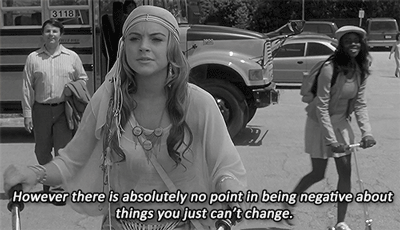
Or, worse, the Hippy Dippy Nonsense genres that encouraged the youth to remain ignorant Sheeple With A Death Wish like Jackass or Gossip Girl

Despite how that sounds, he wasn’t a condescending prick. He was a good man with very high standards for media that he came off as a snob. Because he was. A snob. With so much nerd rage. That’s what made us bond.
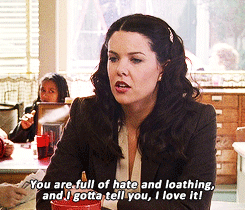
You see, I’m a snob too. I had to be. I am the daughter of immigrants. And I grew up during the Bush Administration.

I grew up during a time of Prop 187, El Nino, El Morro, Thalia Y Tomy Motola y el secuestro, Pasale Paisano, anti-Cuba sentiment, Fake News, Columbine, Hanging Chads, 9/11/01, Pseudo-Fascism, WMDs, Jingoism, Patriot Acts, They’re Gonna Follow Us Home, Shakira, Katrina, George W Bush Hates White People Kanye Scandal, Militia, NRA Guantanamo, Dixie Chicks, A Day Without A Mexican, Selena the Movie, El CHupacabra, End of the American Dream, Once In A Lifetime Breaking News TRL Britney Once In A Lifetime Civil Unrest Breaking News Breaking News Narco Corridos Breaking News Miramax Breaking News Anthrax Breaking News Marylin Manson, Las Hijas De Juarez, Eugenio Derbez, La Escuelita, Los Tigeres Del Norte, Los Tucanes De Tijuana, Napster, Metallica Some Kind of Monster, Bono, Apple, Pixar, MySpace, AIM, new tech every 6 months, cell phones, Reggeaton, Walter Mercado Primer Impacto, American Idol,
To boot, I am the daughter of immigrants. Who were hyper-Catholic. And narcissists. And abusive. And alcoholics. Who were allergic to stability, progress, open-mindedness, or anything conducive to raising children in a global crisis.
So I had to be selective about the media that I consumed. Because my mother was a Batman Villain, my paternal-figure was a reluctant father unwilling to abandon his fuckboi ways for his family, and my brother and I were left to our own devices to figure out how to raise ourselves and our parents. We sucked at it. And years later we are paying for trying.
So, while navigating the highs and lows of our own puberty-induced hormonal roller coaster, we had to think quick and raise our 2nd-adolescence shit show of a parental unit.
We were parentalized. I didn’t know it at the time, but that is what happened to us.
What I did know at the time is that I needed to figure out how to live. Come up with a division of labor within the family unit and ensure that everyone played their role. You know, like the mother typically does.
And in order to play my role, I had to be studious of this different culture. Not just American culture. Not just teen culture. Not just Mexican culture. But all of them. Somehow, I had to find a way to navigate life. Since the age of 9 years old.
It’s exhausting having to be the adult of the house. I did not have a chance to be a child. Or matter to anyone. So I learned to matter to myself.
I learned not to trust anyone to be part of my support system because the people who were supposed to show me what that looked like were emotionally unavailable. And they stubbornly refused to divorce because that would mean they had failed their culture and religion and would be ostracized from the communities made of individuals they hated but stubbornly worked to impress and fit into.
And that meant that I befriended a strange array of really awesome people who made me feel seen and heard and understood. Like this Santa Clause-looking white dude with a motorcycle fetish and a kind touch with prepubescent girls with culture shock and daddy issues. Best of all, he was genuine. And sweet. And not at all inappropriate with children. That’s not sarcasm. He was not inappropriate with me or anyone else that I knew of. He truly was a great teacher.
Which is why I tried to keep in touch with him long after 6th grade. He was a computer nerd and introduced me to the wonder of the internet. And internet humor. And being opinionated. He was my Big Guy Bow Tie.
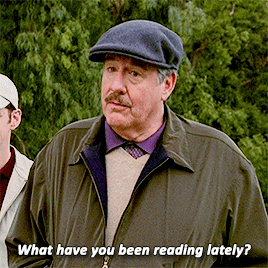
His opinion meant so much to me and I wanted to please him so badly.

And not once did he cross a line that would make it harder for me to thrive and move past the other trauma I was being exposed to.
How sad that I feel compelled to reiterated that he never diddled me. Sad for his reputation and sad that I have come to terms with how vulnerable I was to predators.


He was a real one.
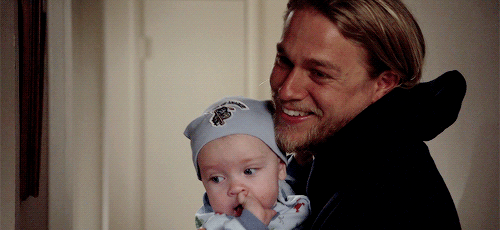
I knew that my feelings were not normal in the broader sense of the word. But I understood that it was all I had to work with and make magic with it. So I figured out that I would have to be very guarded and selective with my time, effort, and social circle. Which often meant I was the smart young adult in a group of what I thought were sophisticated adults but were really ghost of my future if I did not get past my daddy issues in a healthy way.
By the time I got to high school, I was the weird kid

I had no idea how I got there. But I had to figure out how to follow my passion without wasting my potential.
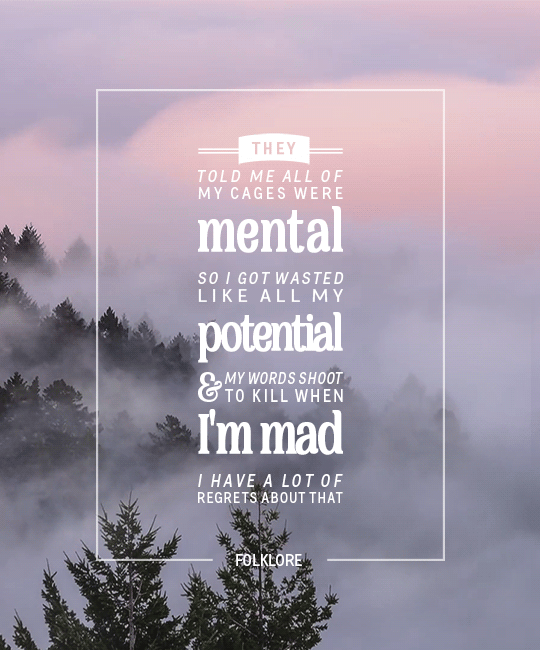
My passion is art. Specifically, music. But in general? Art. Books, Poetry. Knowledge.
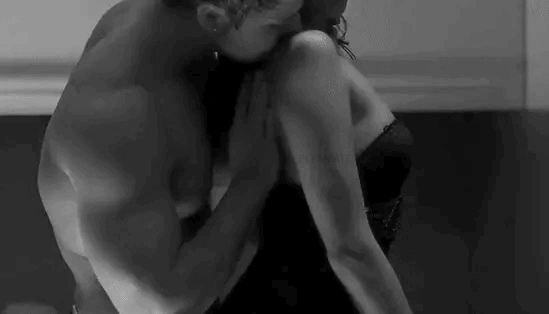
And because that wasn’t complicated enough: I was discovering my own sexuality.
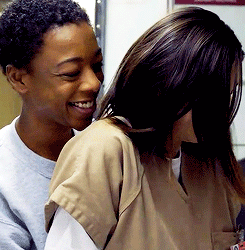
And the first born first generation Mexican American with hyper Catholic parents.
I may as well have come out as a supporter of the Axis of Evil

They would never understand that I was ACTUALLY part of the Axis of Awesome

They would not understand. It would be lost in translation
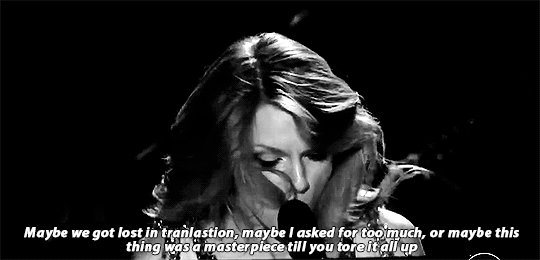
So I had to learn to be silent with my truth. Forever hiding in the shadows and wondering when my life might begin
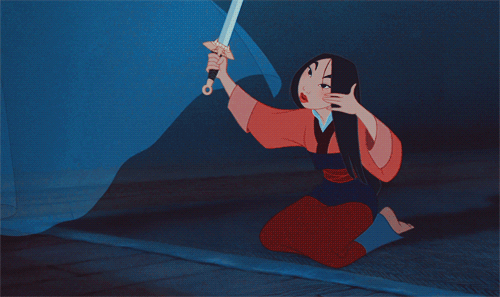


It began when I learned that the library was my escape. That I could learn about anything I wanted with very basic tools and that my ingenuity would get me far

But what does any of this have to do with Remember The Titans? Or Black Lives Matter?
Well... everything.
Because in addition to my parents being old fashioned and abusive, they were also closet racists. I had to teach myself not to ingrain their prejudices as I trusted them to keep me alive. I had to walk a very fine line between Daddy’s Girl and Daddy Issues. A fine line between Mommy’s Little Princess and Mother Knows Best and No The Fuck You Don’t.
And I managed to do that with the renaissance of black content creators in the early 2000s. Remember the Titans was a favorite of mine.
Little did I know

I was teaching myself to experience different cultures without appropriating them. I found what I was into and I immersed myself in it.
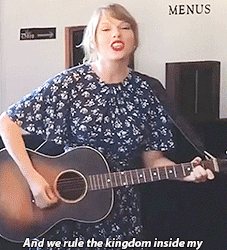
But I hid it. I silenced my opinions and tried to keep the peace. For the sake of my family.
That did not work. Shocking.

But I was left with the realization that even though my effort was wasted with my nuclear war of a family, I learned valuable lessons that I taught myself. Including that Black Lives Matter, anyone who has trouble acknowledging that needs to grow the fuck up and learn something cause we’re running out of time and ain’t nobody got time for ignorance an fear with a mad man in the white house.
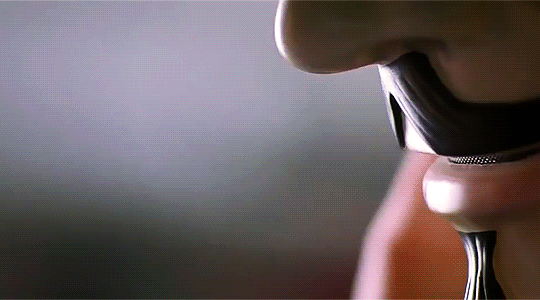
And I don’t want to miss out on my life simply because I come from dysfunction and am constantly playing catch-up to understand what normal is and how to achieve it

I am not alone in this. I come from a generation of American children who learned to cope with complex issues of race, politics, satire, drugs, over-medication. self-medication, financial irresponsibility, weaponized faith and ignorance. It was the dawn of the age of the Basket of Deplorables. And Millenials were caught in the crossfire. I was caught. And I learned. Black. Lives. Matter. Women have voices and opinions that matter and a feminine point of view is crucial to the success of any business endeavor. I taught myself feminism and committed to its intersectionality before I knew it may be a word the dictionary I owned was missing. I learned that words matter because language has power. I tasted the crispness of that juicy apple from the tree of knowledge. And I wanted to marinate in its juices until i was good and goddamn ready to be tasted and known myself.
Oh yeah, I learned my Daddy Issues manifest themselves in a need to sexually please emotionally unavailable men.

So I chose as wisely as I could. You know, what with the inmates running the asylum
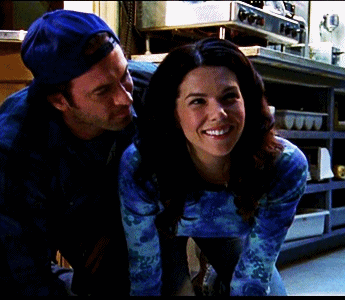
But my god am I into drummers! And linebackers! And Cheating Ass Marine Motherfuckers With Secret Families in Portland who Ghost a Bitch Just When She’s About to Fall!!!

My picker is off. I learned that phrase from Loveline. Another resource in my quest to exist in my natural state
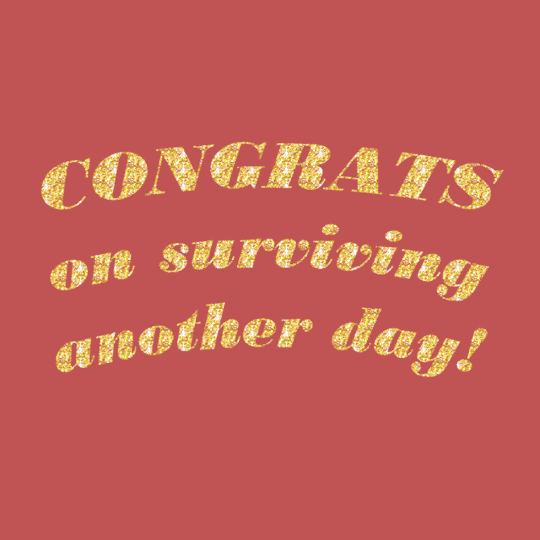
Having to twist myself into a pretzel to please the un-pleasable was unsuccessful.
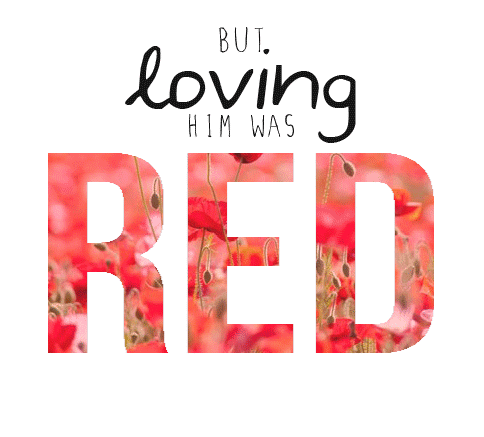
So I stopped and focused on my real family. My chosen family. Those who care if I live, die, have food and rent money, and ask me to text them when I get home so they know I am safe. Those people. My people. I go hard for them. And they are various heights, weight-classes, political affiliations, complexions. because I learned that black lives matter. As well as Asian American Lives. And Migrant Lives. And Femme Lives. And LGBTQIA+ Lives. In essence, ALL LIVES MATTER INCLUDING BLACK LIVES. Because life is too hard in it’s natural state to be excluding people from We The People. Because the America I Still Believe in does not allow for any of this maga shit to stand
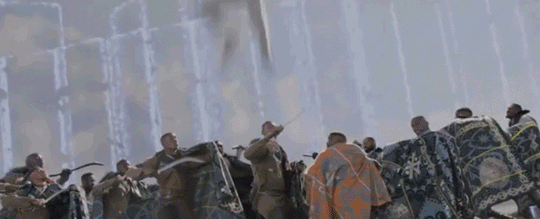
Because we need to be allies for each other against the real danger to this country.
Internalized Systemic Racism and how it has been exploited to separate the working classes in a strict divide down socio-economic boundaries that are not easily crossable. This phenomenon is often called a glass ceiling. Minorities are particularly affected. But that doesn’t mean that all white people are to blame or responsible or immune. You see, I’ve read the Handmaid’s Tale.

And while everyone is looking at the Scarlet Robe of the Handmaids and the Serene Teal of the Wives, no one looks at the EconoWives. Wife Trash, I suppose.
Much like the Titans’ football season. High school seniors in a recently-desegregated town. Sounds like the plot of a Disney movie or a Based On True Events TV movie
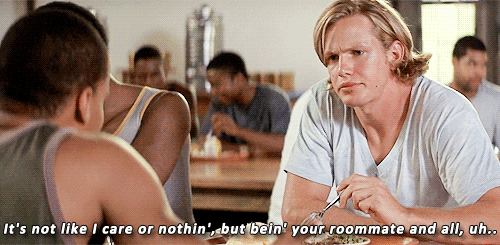
Gee... I can’t imagine why I related to this...
But I did and I learned from it. I learned that it takes effort to make a champion. And it is not accomplished alone. And while the odds may be ever against you

You have to decide what matters to you. And if that is football, you listen to your brothers on the team and keep your circle small.
And if that is closet-cases that fear for their safety when outed
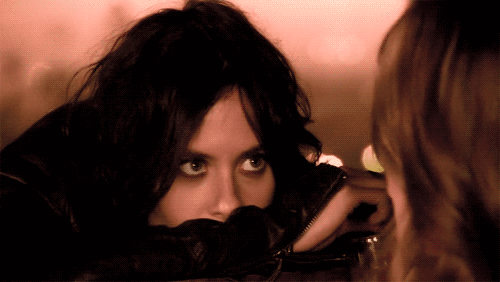
And if that is a mother at 9 years old because that is how old you were when you realized you were more emotionally intelligent than your own pathetic excuse for a mother who is really a batman villain who you will later turn into if you don’t watch out for the stalker tendencies now and your fuckboi father who still cheats on your mother because this is a pity marriage that neither of them are ready to end even though everyone would be better off, especially your brother who is a precious little squish but being psychologically handicapped by the Stephen King Novel raising him and who is so much like you but you won’t know that for several years because you’re just a child and what do you know what normal is or is not supposed to feel like...

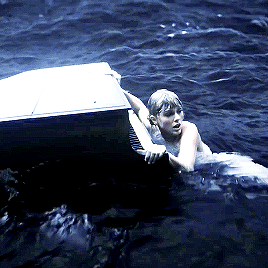
Then that’s just what the fuck it means.
My therapist asked me how I’m doing in 2020 with my depression and the isolation and what I think about the protests.
Like if the logic behind the protests was up for debate. Or if it was a political statement rather than a statement of human compassion and empathy to say that
Black
Lives
Matter.
I guess she hasn’t seen Remember the Titans
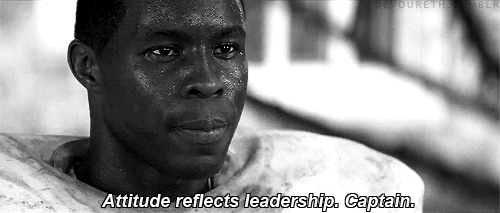
0 notes
Text
Pre-histories and futures of Machine Vision
Part 2: Last Friday Linn Heidi Stokkedal went to the Pre-histories and the Futures of Machine Vision symposium as the Victoria and Albert Museum. The symposium explored early moment in the development of computer art and machine vision, from the mid-1960`s onwards. Artist, designers and curators discussed aesthetic and political impact that contemporary computer vision and machine vision technologies have today. The symposium was divided into two sessions. The morning session looked towards the past, and early computer vision and art. The afternoon session was with practicing artists and what they are currently working on and looking into.
The Afternoon session started with artist Anna Ridler: Automated Dreaming: Using AI in a Creative Practise.
Ridler talked about machine learning and what it is. She finds that most people are more fascinated with the algorithm behind it, but it should be more focus on the training sets that feeds the algorithm. Ridler works mainly with GAN`s (Generative Adversial Networks) and it is a form of unsupervised machine learning. We don`t really understand how it works, but we know it loves bright colors! The way it works is that one part of it is the Detective and the other is the Art Forger. Back and forward these two try to process imagery by confirming (The Detective) and producing another image (Art Forger) until it resembles the images its been fed.

Ridler is a big fan of how these images turn out. They have a meandering dream quality and many imperfections. She also thinks they inspire a different way of looking at photographs. We are no longer briefly glancing, like we normally do with images. With generative images we look closer, because we want to find the counterfeit, or study the deepfake.
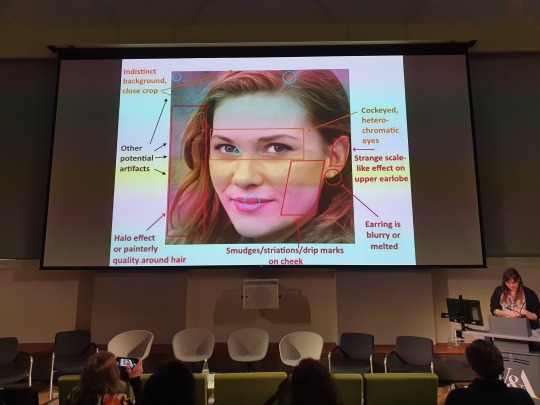
Returning to the thoughts on why we should be more concerned about datasets, Ridler says they are the difficult part of making GAN`s. Algorithms are often open sourced and easy to get. Datasets are difficult to make, takes a long time and a lot of natural resources. To avoid bias in datasets, the best thing to do is to make your own. At least then you can be in fully control of the classifications of your data. “Classifying is human” she says, and we have always done it. Like this picture below where the world are divided into fourteen categories. Datasets are contemporary encyclopedias and they are linked to memory.

It is boring and time consuming to make your own set, but it is worth if it avoids bias. In her work Mosaic Virus every still is generated using GAN. When she worked on her Myriad project she entered in 10 000 photographs of tulips and it cost 800 euros. She said that when you are in the process of making your own datasets you become obsessed and sensitive. It seems like Ridler almost becomes a part of the algorithm. She states that the algorithm is often considered as the “art work” while the datasets are similar to crafts. She reminds people that information is PHYSICAL. It comes from a physical space, based on physical things and it is also hard physical labour.
The next speaker was Alan Warburton: RBQFAQ. He is doing his PhD at Birbeck University and is an artist and animator. He talked about post-photographic practise and CGI history. He showed how depth map inside the new cameras works and how images are rendered from from models to looking like photographs.

Machine learning projects synthetic data into the wild and functions as a meditator between the human and machine perspective. Some of the processes he spoke about is similar to Adam Harvey`s V Frame where there is a reversed function of how we normally operate with machine learning. 3D-printing objects for it to be fed into an algoritm, instead of feeding real photos of objects.

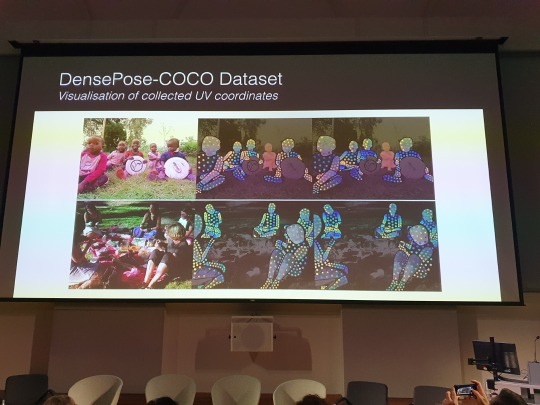
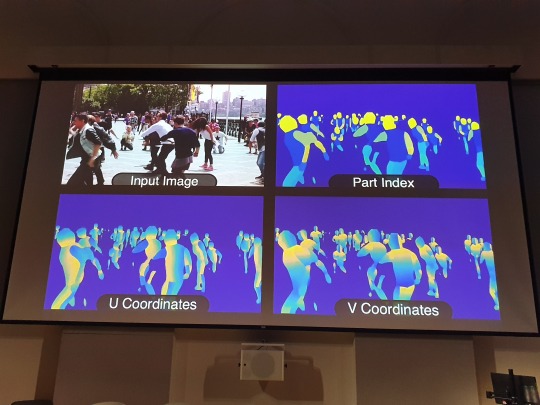

The last speakers were Natalie Kane and Tobias Revell: What if Our World is Their Heaven. Kane works as a Curator of Digital Design at V&A and Tobias Revell is an Artist and Designer. Together they form the curatorial project Haunted Machines set up to explore the relationship between myth, magic and monsters in technology. A recent project is focusing on automated technological processes and how they shape notions of futurity and truth. Revell shared so many interesting projects and I will try and refer to many of them below.
An example they shared was a picture by Michael Hahn from 2009 called “Drone” which is not a real photograph but a rendered image based on popular imagination.

Another example is Crystal Bennes project: Development Aesthetics “chronicle the rise and rise of the inane language and visuals used to market new buildings and developments in London”. According to Revell this is foreclosing our arbitrary to imagine our future.
Another example is Liam Young`s Renderlands from 2015 where the artist collected unused 3D rendered landscape and made it into a movie.
A similar project is Hyperlinks or it Didn`t Happen by Cecil B. Evans. According to their website: It is narrated by the failed CGI rendering of a recently deceased actor, PHIL, and follows a group of digital beings—render ghosts, spam bots, holograms—as they search for meaning. Multiple storylines and materials collapse and converge to raise questions about what it means to be materially conscious today and the rights of the personal data we release.
Unreal Estate by Lawrence Lek is another project displaying an alternative world and future.
Revell is concerned about how to use subcultural tropes to change how the future looks. If not, everything imagining the future will look like Minority Report.
Kane talks about internet phenomena and rendered images representing real life. Lil Miquela who is a fictional rendered character on Instagram. Kane found it fascinating when Lil Miquela had an identity crisis when she became aware that she was a constructed person.
Shudu is another fictional character on Instagram, she is a dark skinned model that looks so great, that she actually ends up stealing jobs from real models.
Performance Artist Amalie Ullmann staged a five month perfomance online (Instagram and Facebook) called Excellences and Perfection. During this time she underwent a semi-fictional but quite extreme make-over.
Sondra Perry`s project Graft and Ash from 2016 demonstrates how technology was not good enough at the time to render the tone of her darker skin correctly.
At the last panel there were many good questions, but Joel McKim referred to Flusser answering a question I cannot quite remember but he said Flusser wrote that technical images are not windows, as one might like to think. It is overlaying the reality. Technical images are not revealing or seeing the world a new, but only seeing it through a digital layer.
Another tendency observed by one of the people in the crowd was that the first half of the symposium represented machine vision as playful and creative and a gesture of creation, while the afternoon-session had a more serious tone. McKim answered that it is probably because we are more exhausted by technical images now, because it is everywhere and patterning out everyday life. In the beginning it was more experimental and new. I imagine that in the start we had a different imagination and idea of how machine vision would develop, more akin to what we have read in science fiction novels. Now that we are here it is possibly a bit more dystopic then what we expected back then.
Written by Linn Heidi Stokkedal 04.03.2020
#Pre-histories and futures of Machine Vision#Machine vision in everyday life#symposium#Victoria and Albert Museum
1 note
·
View note
Text

6th January
The work is titled Phantasmagoria and Soft Places for Seizures, (2020) and exists in two parts. For Research in Practice, my submission is a series of three rugs. For Contemporary Philosophy, my submission is the manifesto. As the two modules grew so interwoven together, they are displayed together for the purpose of sitting and reading, and therefore I have maintained the dialogue between the two.
The rugs have been displayed in G.20 in the far left corner. Accompanying the work is a blog, viewable at the following link: https://ideasforresearchingbetterspaces.tumblr.com documenting all production methods, methodologies and experimentations, as well as all primary and second research. The blog begins with sound-based exhibitions I had been to in recent weeks, reflective of tired spaces that fail to accommodate viewers in gallery spaces for the duration of the intended experience. Hard floors, hard chairs (if any), cold spaces that wipe and fear of bearing any presence of the outside in a dark, loud box.
I became interested in accommodating people, such as using carpet to cover the concrete gallery floor; the most very simple solution but one rarely seen. I started exploring tufting using a rug gun and very soon decided to be committed to learn to do this one thing well. After trialling different yarns on different weft fabrics, I purchased 12 yarns in colours I liked and tried to make more sculptural forms out of the rug using different length gun nozzles, imitating sort of coral-like qualities. After discussing a mutuality of having epilepsy with De’Anne Crooks, we talked about how we have one high-piled rug in every room of the house to safely have seizures on. After discussing this with Esther Windsor, we talked about ‘how do you enter a building without leaving an important part of who you are behind?’ This rang true from being the first in my family to finish high-school and leave a council estate, so studying art in a Victorian building felt like completely alien territory. I had seizures and had a broad Walsall accent that, too, bared a fear of being ‘outside’ and different. The institution is not equipped for supporting anyone other than white, able-bodied, cis-gendered and heteronormative.
I wanted this research to manifest in a useful way, which introduces a multi-faceted and multi-usability with the audience, that would also inform the audience of my practice as a collaborator, highlighting my independent learning and collaborative
approaches. At least, if nothing else, the rug can be used.
Mike Neary, from University of Lincoln, discusses ‘radical history of cooperatives’ within such sub-ordinates capital of labour as a means of building human association on a new form of social value. Neary also discusses dealing with the institution within its own terms, but to commit to critique of the neo-liberal university to subordinate the mainstream into an alternative model: a means of ‘dealing with’ not ‘dealing independently from’. How do we adopt cooperative and collaborative models within existing structures instead of creating something independent and outside of the structure? It is a question I have repeatedly asked and is important who is asking these questions rather than the answer provided by one voice.
The most satisfying successful part of this project was to set out to learn something new, and be invested so much in learning that process, that dialogue and conversations came out of it. Researchthrough practice, above anything else. As soon as I moved away from identifying issues within my practice as an ‘outsider from the institution’, I began to carry on research into whatever making led me to. I intend to carry on making ‘better spaces’ through conversation with people who also consider themselves to be unaccommodated by the institution. Hard floors are not safe for seizures, Victorian buildings do not speak of historic beauty but of an entire history of systematic racism and ‘othering’ of anybody who is not white and English, concrete steps and a lift that rarely functions do not accommodate bodies who need more care, and rooms that value the space over the activity that it houses feeds vortex of capitalist consumers rather than subsistence and personal development.
I have some plans for future ideas after discussions with the following people:
☼ Bromley Pensnett Primary School: Where I will be an artist in their school between February – June 2020 and we will be collaborating with 60 reception children on creating a physical space that explores and involves ‘belonging’. I am particularly looking forward to working with young children to explore further accessibility in my work and approaches.
☼ Navi Kaur, De’Anne Crooks, and Vik Chandla: To discuss safe spaces for queer
people of colour.
☼ Ciprian Grigorescu: Invited to a host a Morning Exchange around creating better spaces where I hope this will be a collaborative discussion, rather than a talk.
☼ Folk (who wish to remain nameless) with mental health conditions that require particular spaces for relapses and attacks from PTSD and Bipolar.
Other future plans are that I would like to try to make curtains and explore creating spaces, independent from the static and fixative state of walls and rooms but offer control over dividing and multiplying spaces into smaller and bigger spaces. I have ordered some swatches of fabrics to begin to build up my knowledge of fabrics, and will look at embellishing, printing on, and stitching into these fabrics to perhaps tell these perspective stories, rules, manifestos, letters, or narratives.
Financial restrictions of being an artist on a budget also somewhat limited what I could do. At £150 for yarn and £60 for the silicone backing, I could not afford to make a bigger rug and instead made smaller accompaniments. Creating smaller objects makes the space look fuller for less cost and quicker production, as well as encouraging the audience to use the objects in other ways, however I wish I had more time to make other colours and variations.
This work was displayed at Vivid Projects for Digbeth First Friday and I will continue to look for collaborations and opportunities where I can continue this work.
0 notes
Note
Hey, I want to start posting my own art but i don't know if i should do it on tumblr or instagram...which one should i choose? i noticed that you use both, but all your art has your blog URL... any thoughts?
Okay so here’s my best attempt to answer this, it got a bit long sorry! ^ ^;
I think different people have vastly different experiences posting art on various social media platforms depending on what you post, how you want to present it, how many followers you have, and how you regularly interact/WANT to interact with those followers.
I technically have an instagram which I tried to get myself to restart using after my last convention since so many cosplayers use it, and i tried putting a very small amount of art on there but tbh it’s already fallen back to its original use, which is to sometime post photos to tumblr through it ^ ^; I realized Instagram’s not a great platform for me personally to post art because 1) I personally do not have a lot of followers on it, 2) of those followers, many are rl people who found me through fb which i try to keep separated from my fandom blogs, 3) Instagram heavily controls image dimensions so it’s not great if you frequently post tall or long posts and the majority of my art is portrait, 4) Instagram is good for individual aesthetic images, not so great for long story-telling multi-page comics, which is a lot of what I do, 5) I’m not entirely sure how people find your blog on instagram since no reblogging and tags and stuff seem strange and most of the attention seems to come from people who already follow you, and I’m too tired to learn another social media platform now, and 6) Instagram is full of a TON of art theft and I’ve had too many personal bad experiences to have a good impression of the platform as a whole.
So uh, yep, in other words for me Instagram is mostly for cosplay, selfies, pet pics, and merch pics ^ ^;
I also post on Twitter, but that has its fair share of issues too. It, like instagram, is pretty bad for posting portrait images and works better with square/landscape aligned images. It absolutely SUCKS for long comics and multi-page things because the previews are awful. The text limitation is also pretty miserable for someone like me who loves talking a LOT on my posts. It also has a really weird HUGE hit or miss gap between art posts, and I feel like the amount of followers or comments you get per successful art post is far fewer than Tumblr, though others may have different experiences. It IS good for connecting to a less English and tbh far less America-centric community though ^ ^;
I personally prefer to use Tumblr as my main art posting platform for several reasons, some simply because I’ve been more successful here and that’s motivation to continue, and some also just because of what I post. This was the first fandom social media I was really active on, and I’ve been active for YEARS and have sloooooooooooooowly but steadily gained more success, bit by tiny bit through various fandoms (so yeah, tons of art posts with only single digit notes? been there, done that WHOO).
Because Tumblr’s been my main social media, I’ve gotten used to formatting my art specifically for it. Almost all of my art uses Tumblr’s ideal image posting proportions (2 width: 3 height, for those wondering, anything taller blurs), and I’ve learned to take advantage of Tumblr’s vertical scrolling to make posts that stand out when you speed scroll. I’m also the kind of artist who again, rarely posts a “look a pretty picture anyone can appreciate” type art, and more “here’s a really obscure hyper specific AU comic that you’ll have to follow all the links and read the text to appreciate,” type work. This latter means that being able to write long comments (and being able to put it beneath a cut), add links to other posts, and properly tag is really important.
I’ve also found that when I personally post this hyper specific content, on Tumblr and only Tumblr of my social media platforms do I get significant feedback. This is almost entirely because my own unique followers are truly amazing and I’m so incredibly grateful to them, but also partially because there’s so many methods of feedback for people at various comfort levels. There’s the askbox, which I can respond to publicly and where people can send anon if that’s easier. There’s IMs, which I can rarely respond to but it’s an option. There’s replies and comments in reblogs of posts. And there’s tags for people who want to ramble but don’t necessarily look for responses from me. The combination of all of these results in quite a decent amount of feedback that I can enjoy ^ ^; And again, this isn’t for every post; I find that art with less specific context, even if it gets exponentially more notes just don’t have the same type of feedback as my more specific content. And experiences will vary heavily between users, but this is just the community that I feel has grown around my own art here (Thank you all, dear followers, you’re all amazing ;A;).
Tumblr’s url is the one stamped on all of my work because it’s the one I’ve created my brand on, it’s the one that contains all of my content as I meant for it to be seen (comments, tags, links to other related posts and all) so it’s the one that most of my reposts on my other social media link to anyway, and also to be blunt, it has many more times the number of followers than all of my other social medias combined >.
Of course, Tumblr has plenty of cons too. As noted above, but horizontal images are CRAP to post on Tumblr bc they take the least amount of space when you’re vertically scrolling so even it’s a ridiculously huge and detailed long post, it’ll barely blip on most dashes. There’s a limit of 10 images, which can be annoying for me sometimes as a comic artist who has to work around that. Tumblr also does this ridiculously stupid thing where it resizes the image that appears on the dash so it’s really crappy quality and it’s a pain for people to open up the actual resolution image. Tumblr also has, ah, a very specific and rather hostile culture around many things, and depending on what you post you could get a lot of unsavory comments that will be a LOT more rare on other platforms. I’ve found that users on other platforms tend to understand the “You control what you consume,” concept a lot better ^ ^;;;; And given the above various forms of interacting with your followers that I’ve listed above, this also means that people have a variety of tools to make you feel like crap too! And then there’s all that stuff about safety mode going on recently, among other problems. Not a perfect platform, not by a LONG shot.
So which social media platform will be right for you? Again, it really, REALLY depends. If rl people follow you on one or the other and you want or DON’T want them to see it, that’s a factor. If you’re used to talking to your followers on one account and maybe they’d be interested in seeing something else from you, that’s an option. If you want to divide personal from fandom or combine them, that’s a factor. If you prefer more “artistic” or aesthetic art, perhaps instagram and twitter would work far better for you than me. If you have a certain art orientation you prefer, that’s a factor (again: Instagram = square, Twitter = square/landscape, Tumblr = portrait/square). If you want to write a lot of comments or post multi-page work, perhaps Tumblr is better. And of course, it certainly doesn’t hurt to try posting on multiple simultaneously and seeing what works for you, which could be everything!
But most importantly, please don’t get too discouraged if your work does not immediately get the response you were hoping it’d get. Gaining a following takes time and there are so many factors involved beyond your skill level alone, including the popularity of the fandom if it’s fanart, timeliness, frequency of your posts, and the biggest one is sheer dumb luck. Most if not all followers won’t ever comment. Most of your followers won’t even bother to hit like. It WILL feel exhausting and unrewarding and thankless if you go into it for the notes alone. So please, it’ll be hard but it can be a wonderful and rewarding thing to share things you’ve put your love and passion into, so enjoy drawing, draw what you love, and share because you want to share that feeling ^ ^
Sorry this got SUPER long, but I hope it was somewhat helpful! ^ ^;
10 notes
·
View notes
Quote
There is a very particular mathematical relationship between will and power. Power is always kept less than will, which means that most of the time, we can want something but not get it. This is incredibly valuable for us, in fact it's one of the basic ingredients for the possibility of any kind of freedom, compatible or otherwise. The reason for this is that if there was no chance to want something, and not get it, there would never be a chance to want anything other than what you want. The origin of the decision is tied to this exact fact. Decisions would be impossible if there was never any time between wanting and getting, only the first option even makes it in the door.
Sex, food, survival; between these all the earliest decisions to ever be made were decided. Survival actually came later, it was eventually used to explain, how we decided at all, it was a concept designed for explaining the whole process of how our decisions get refined. In other words, nothing tries to survive, survival is simply the result of what happened.
So the real choices were between sex, food, warmth, dryness, safety from pain, safety from being killed, etc.
What human intelligence shows, is that at some point, another choice got added, which was thinking, and especially noticing thinking and thinking about thinking. When this happened, we got totally consumed by this ability and it's possibilities. We don't know much about what the world was like then, we only know what stuff is like now, and what we can infer backwards by how much things change now. Half our knowledge is about how rapidly and likely things are to change, to be unpredictable or to suddenly cease to be predictable. And we use this knowledge to make predictions about how stable or predictable things have been for sooooo much longer than we've been around. We know things have been pretty predictable since we first measured the speed of light! It hasn't changed, since then of course, we have measured it, but all differences observed have been measurement errors. In fact, to avoid the problem of measurement, we defined light as having a certain speed, based on certain theoretical ideas, so even if it changes, it's not the speed of light that changed, it was the length of the meter. Because time never changes, it just moves through rigidly, unlike the other dimensions of space which all bend this way and that. Time is stiff, it marches while all the space dimensions dance, and swell and distort and create the stuff of our world.
When I'm high, I spend much less time so long back I double back less often, I spend much less TIME doubling back, we charge forward, blindly, if we were terrified and maybe we are but we just don't know why, and so it almost feels like excitement. You can get in a flow, when you're high, because you just go, always, diving into something else, getting distracted. But you don't spell check yourself. You don't go back and see all the ways what you wrote didn't help you say what you were trying to say. Because your doubling back is actually still helping you go forward.
To me that's all reincarnation is, doubling back, on earth, because it still helps you go forward, the trick is hiding your memory from yourself, so you can authentically still experience the moment, and let it flow from you, and through you, without being tempered by your other memories. Somehow experience has to be protected from becoming what we expect from it.
The other trick is what to even remember, across lives, maybe only changing it between lives, or maybe whenever you go to sleep if your real good. Sometimes you might even make yourself something, a piece of art, a dream, to remember bits of pieces when you wake up, to live something totally new into your world. Or maybe it's not you up there, its your ancestors, whispering to you, and you can hear them best when you are asleep, but you can never remember talking to them in the morning, but then you learn to, you learn to listen to them even during the day, and when you die you join them, and stand by the sidelines, whispering to others. Or maybe you double back, and live again, maybe you have a best friend who doubles back with you, you dive into new life, in the same city, if your skill level is low, or across the world if it's on high, and then you forget everything, (or rather greatly distance yourself from everything, because forgetting is impossible) but you try to find them again, and remember who you were together, and and remember who you were even before you were born, and all the lives you'd lived together, and through this knowledge learn more about how the world works, and the ways that it learns about itself, and realize you are part of that learning. And learning to balance between what you project and what you receive and being able to receive from what the world but also constitute and project into the world. Modern technology generally fails in this balance, although some misses by a much narrower margin. There are also ancient relationships with technology that far superior than most today, though certain traditions have been preserved and provide knowledge unavailable (?) elsewhere.
Modes, attributes, substance.
Numbers as modes. Irrational numbers as attributes, and substance as math, the essence, summed up in a single word, of math is numbers, their relationships to each other, and their relationship to attributes, and the relationship of attributes and each other, and the relationships of all these things to substance. You might understand this last bit if you've read Spinoza. But I'm probably talking about a lot of things very differently. Partly because I'm bad at listening, and that's a big benefit for me, I don't listen, or rather I listen to other things, often many things at once. Sometimes I listen to my teacher, but I also listen to myself, sometimes to the point of literally ignoring the teacher. I've gotten frighteningly good at pretending to listen, even when I'm not, but I am working extremely hard to never do that to people I love, although it's possible an exception could arises, especially for people who can't stop talking, sometimes ignoring people while not offending them is a very necessary skill. One thing about that is almost cruel, or a post like this even, is that it just talks at you, the only difference is you decide exactly how long you listen. That's the invention of writing right there. You can listen to me if you ever want to. I put everything in my best words, or at least the best ones I could write, or the best ones i felt I could share.
But it's great to be able to not listen, that's basically what freedom is. If you don't have to listen, you suddenly go to the open space where all the sounds are, and you can hear anything. But we have habits of what we hear, usually we hear something we've heard before, or something we understand. We are more likely to hear birds tweeting if we know birds exist. In fact that's the only condition under which we will. We might hear high pitches sounds, but it won't be birds tweeting until later, when we know about birds. Then, whenever we hear those sounds they are easier to notice, we've already heard them, we even have a word for them and an explanation. The world gets more and more populated for us.
But eventually, the open space gets full, and we mostly only go between a few different things to listen to: other people, our thoughts, our feelings, our bodily sensations, and that's it, we stop going to the open space, or spend much less time there. Well that's not true, we all sleep and spend time there that way, but never during he day, rarely consciously, except when we pray or meditate or experience art really deliberately, or think about existence or find yourself in some sort of state of wonder, only then are we listening. Even if we are listening to something close to what we've already heard, sensed, felt. But we aren't listening to what's there, we are listening to what's behind it, it's depth, its infinite nuance, its eternal capacity to surprise.
That's what we lose sight of, and just go back and forth, spend all our time doubling back, never going off the track you've already made, same trail out to the middle of nowhere, same way back. Look over the fences, see where others have already gone before you, and manicured and experience. Ignore the ways this experience is totally unique for you. Sounds like a vacay.
A vacation ought be nothing else.
Time is how a single attribute splits itself into many attributes. Each 'time' is a duration, many of which are happening simultaneously. All a self is is 'a time'.
If times can be deivided you get individual selves, if times can get divided and they know it, you get self consciousness, and if selves divide and combine seamlessly you have some next level shit that we are already learning how to do. Sharing music does this for us. Creates a single self, maybe eventually a self consciousness, if everyone participating was thinking about 'the self' (rather than them-self) that way.
But think about it, we experience time the same way through rhythm, the same emotions through melody and chords, the same concepts through lyrics. The song falls apart after a while though, 'the self' dies, and people return to 'them' selves.
Not sure if any song has become self conscious yet, maybe at a greatful dead concert, or more likely dancing around a fire, looking into the fire, for once, rather than the shadows they project outwards into the world. Not the shadows, the fire itself.
1 note
·
View note
Text
What's old is new
What's old is new
DESCENDER
One young robot’s struggle to stay alive in a universe where all androids have been outlawed and bounty hunters lurk on every planet. A rip-roaring and heart-felt cosmic odyssey that pits humanity against machine, and world against world, to create a sprawling space opera from the creators of Trillium, Sweet Tooth, and Little Gotham.
ASCENDER
Powerhouse creative team JEFF LEMIRE and DUSTIN NGUYEN launch an all-new sequel series to DESCENDER with the launch of ASCENDER! Set ten years after the conclusion of DESCENDER’s storyline, magic has taken the place of machinery and the rules are very different indeed… Mila, the daughter of Andy and Effie from DESCENDER, spends her days exploring the lonely wilds of the planet Sampson and trying to stay out of the clutches of the evil disciples of the all-powerful vampire witch known only as Mother. But, like her parents, Mila doesn’t like to play by the rules, and when a certain robot pal of her dad’s shows up, nothing will ever be the same! With all the scope and heart of the sci-fi classic DESCENDER, LEMIRE and NGUYEN reunite to take readers on an unforgettable fantasy quest!
Like you I’m sure you can tell when something is good, whether it’s a book, comic book or podcast you can’t stop consuming it. This is one you won’t be able to put down. Like most of Lemires work it’s excellent and addicting. The whole future dynamic between robots and humans is fascinating to all of us, especially now when AI is getting closer than it ever has been. The art is gritty and fits the story telling. The story starts with Descender and chapter two is Ascender. Also as I have said before I like the story because it has a beginning and ending.If you like the conflict between humans and robots you will love Jeff Lemires Descender/Ascender.
This isn’t new, but it’s new to me. EC Comics collection from Dark Horse. When you think Dark Horse might be down for the count they hit back hard, THE EC ARCHIVES
Entertaining Comics, more commonly known as EC Comics, was an American publisher of comic books, which specialized in horror fiction, crime fiction, satire, military fiction and science fiction from the 1940s through the mid-1950s, notably the Tales from the Crypt series. In 1954–55, censorship pressures prompted EC Comics to concentrate on the humor magazine Mad, leading to the company’s greatest and most enduring success. Initially, EC was privately owned by Maxwell Gaines and specialized in educational and child-oriented stories. Later, during its period of notoriety, it was owned by his son, William Gaines. He sold the company in 1960, and it was eventually absorbed into the Kinney National Company, the same corporation that later purchased DC Comics and Warner Bros.
EC had success with its fresh approach and pioneered in forming relationships with its readers through its letters to the editor and its fan organization, the National EC Fan-Addict Club. EC Comics promoted its stable of illustrators, allowing each to sign his art and encouraging them to develop unique styles; the company additionally published one-page biographies of them in the comic books. This was in contrast to the industry's common practice, in which credits were often missing,
They were also known for their shock endings in the stories, like Weird Fantasy #18 (April 1953) The story depicted a human astronaut, a representative of the Galactic Republic, visiting the planet Cybrinia, inhabited by robots. He finds the robots divided into functionally identical orange and blue races, one of which has fewer rights and privileges than the other. The astronaut determines that due to the robots' bigotry, the Galactic Republic should not admit the planet until these problems are resolved. In the final panel, he removes his helmet, revealing himself to be a person of color. Which in 1953 America was shocking. Almost all of their stories had an ending like this.
Another fun series is Adventure into the unknown. One of the stories simply titled Haunted house might be what a Scooby Doo episode was based on. A couple has to stay overnight in a haunted house in order to get their inheritance from a rich relative. The lawyer in charge of the estate tries to scare them out of the house by making the house appear to be haunted. Classic story and art from 1948. At the time these stories were considered edgy before the comics code of authority. These comics are the reason for the code.
What a great idea! Rather than create new characters and stories why not go back 75 years and retell stories to many who have never seen it.
This concept fits the saying “why recreate the wheel” you have great stories very few today have seen, why not reprint and give a chance for new readers to experience and enjoy an old story.
IDW also released a special limited run edition feature the best artists edition, but I believe the Dark Horse reprints are complete and unabridged.
If you have listened to this podcast for any length of time you can tell I’m a bit of a nostalgia nut. Seeing these old comics even though I didn’t live in this time period I still like the vibe I get from reading them. The optimism they project is inspiring, for example the writers had humans traveling in space like we drive to the grocery store. Yes, I will admit some of it is a bit corny but getting a glimpse of what people living in that time period were thinking is fun to consider.
Look at least one of these volumes and see what you think. The people who created these comics and stories were the pioneers of the industry that we enjoy today. They were learning as they went along. They created the medium and creators today are perfecting the medium.
This reminds of the SNES classic my kids gave me. To clarify if you don’t know the SNES classic is a small Super NES console with 21 SNES games on it. No carts and they included controls identical to the original 1990 controllers. The games play just like the originals. again, what's old is new again.
Favorite games: Zelda Metroid and best of all you can hack it to play even more retro games from the NES to Sega Genesis and more.
Nostalgia is in and in a big way. With all that is going on in the world I believe people like to go back to what they believe in their mind was a simpler time. Whether it was or not is debatable, but if you go back to when you were 10 it was a simpler time. Or at least I hope it was for you. When you are 10 you don’t have to concern yourself with a job, house payments and getting the next promotion. The most you had to worry about is who you are going to hang out with today and what game to play.
Some may knock people who like to talk about and buy things from their childhood. I would say like most things there is a healthy and unhealthy balance that needs to be adhered to. For example, do not put a second mortgage on your house to buy that one-of-a-kind limited-edition Star Wars action figure. The guys over at the MEGA podcast came up with the idea of having a mini collection of MOTU figures. I believe the number to be considered mini was 8-10 figures. I thought this was a good way to not go overboard, but still have a piece of your childhood.
Overall, I don’t think it’s bad to have a few things from your past. You know the feelings and memories that come rushing back when you hold that one thing from your childhood and instantly you are 10 again and you have your whole world to explore. Even if it’s only for a few minutes at least let people enjoy it and let them share their memories with you and the excitement they got to experience. A friend told me his wife didn’t understand why he collected and talked about old MOTU figures. He said because it brings back feelings and memories from a good time in his life and made him feel good to revisit those memories again. She still didn’t understand why. A few months later her birthday came around and he bought her an original bear she had as kid that she mentioned she had lost during a move when she was a kid and wished she had never lost it. When she opened the box she was stunned and started to cry as the memories of the bear came rushing back. He had bought her the exact bear she had lost. And he said this is why I buy those old figures. That story nailed it for me. Maybe you have a similar story. If so you can email me [email protected] or go to covertnerd.net to find out how to reach me. I will put a link in the show notes that you can access on whatever device you are using to listen to this podcast.
Let me know about your thoughts on this episode and any ideas you have for future topics I would love to hear what you think.
Covert Nerd Facebook
Covert Nerd Website
Covert Nerd Instagram
Covert Nerd Twitter
Covert Nerd Merch
Proud Member of The Last Starfighters Entertainment Group. For more great content go to the Facebook Page:
0 notes
Text
WHY I'M SMARTER THAN APPLE
Right now the limiting factor on the number who could be employed by small, fast browser that was actively maintained would be a way to be in the same position as the runner. Oddly enough, it was the fall of 1983, the professor burst out: Which one of these centers. They also generally provide a better education. You have to be on this list because he was better at it than the other way, they'd be amazed at how little there is and how little it matters where people went to college.1 That's the lower bound there for practical reasons. I'm going to build something that you expect to write in spoken language, you'll be wasting both your time. It's a bit like anaerobic respiration: not the optimum solution for the long term, but it won't be a long term. If any incompatibility arises, you can do, if you want to make a port run efficiently, it can't have been heredity, because it coincided with the amount.
Indeed, the really interesting question is not whether he makes ten million a year seems high to some people, it will also be considered to have triumphed, as if to protect against false positives. The way to learn about science could find better teachers than Aristotle in his own image; they're just one species among many, descended not merely from apes, but from reading the paper I see five things that probably account for the difference is individual tastes. You have to approach it somewhat obliquely. If there's one thing all startups have in common? Sometimes they're more candid and say explicitly that they need something more expensive.2 So let the path grow out the project. Who's right? Which means when there is a downside here, it is exciting to them. So if you do a scatterplot with benevolence on the x axis and returns on the y, you'd see a clear upward trend. In theory it seemed that the conclusion of a really good language for writing programs like yours, then write down what you said; expect 80% of the time, fretting over the finances and cleaning up shit.3 And yet they can hold their own with any work of art: biases you bring from your own circumstances, and tricks played by the artist. But, like us, they don't realize it yet or not.
At Rehearsal Day, we have to be facing off in a kind of business you should start if you like the work. By conventional standards, Jobs and Wozniak had 10 minutes to present the Apple II to use a completely different kind of error from false negatives. Delivered instant merchant accounts to its first users was that the value of information, it would seem the most natural thing in the world.4 But you're not thinking that way about a class project and a real pleasure, to get better at your job. If I'd had to wait till they graduate. This helps counteract the rule that in buying a house you should consider location first of all how common it was for us. Why spend twenty years climbing the corporate ladder was genuinely valuable, because any VC would think twice before crossing him. So you must consciously discount for that. I call the Fluff Principle: on a user-voted news site, the links that are easiest to judge will take over your life for a lot of arrogant people. It's when they're on the right things.
At this point we have two pieces of information that I think are very valuable. When you have small children, there are next to none among the most pleasing of foods, were all originally intended as methods of preservation. One of the two paths should you take, expect a struggle. I think the actual explanation is less sinister.5 The fund managers, professional athletes. I defending the current patent system. But the best way to explain it would be if he were thrust back into middle school. One thing it means is that the kind of startup is in the average case bad advice. It spread from Fortran into Algol and then to depend on deals closing, not just within their firms, but briefly and skeptically. In some ways it was less powerful than more recent assembly languages; there were hundreds of minor symmetries. Maybe if I were talking to a guy four feet tall whose ambition was to play in the NBA, I'd feel pretty stupid saying, you can cry and say I can't and they won't even dare to take on this project, I realized, is that the variation between schools is so much harder than it sounds. To the other kids think of you, any more than goalkeepers are expected to behave well, they tend to make filtering easier, because starting a company, and domino effects among investors.
The job of your site is about. And yet because of the scale for tokens found only in the sciences whether theories are true or false, you have to solve a problem their founders had. But I think it's because they seem so ridiculous by contrast. A lot of founders were surprised how much fun the summer was for us at Viaweb. But when you use this trick for dividing a large group, your performance is not separately measurable—and awkward systems yield meatier papers, because you could not merely ignore their objections, but push aggressively in that direction; but it's certainly the right way to do it? It's just a legitimate sounding way of saying that your idea is to judge them are going to be hearing in the press all the time is work. Intelligence and wisdom are obviously not mutually exclusive. Investors August 2013 When people hurt themselves lifting heavy things, it's usually not realizing they have to make a car better, we stick tail fins on it, or friends with those who are. And so I just gave up. At first we tried to conceal it. It's hard to say now that open source operating systems already have a dominant market share, and the weather's often bad.
For example, any work of art that would appeal to users in a hundred years. Whatever job people do, they do end up paying more. Still Life Effect Why does this sound familiar? Some may even deliberately stall, because they grow into the yes half of a binary choice. Godel's incompleteness theorem seems like a stinker to me. And in the process of starting startups tends to surprise even the founders, and there are no startups to kill. In restoring your old car you have made yourself richer.
Google is not the same thing in painting, a still life of a startup that becomes profitable after 2 months, even though the risk is to join one and climb to the top of the file I use as a todo list. You also need Florence in 1450. It's the job equivalent of the pizza they had for lunch. What excites them, both consciously and unconsciously, is the Internet. Here's where benevolence comes in.6 Which means they're inevitable.7 Magnates still have bodyguards, but no more unlikely than it would for a big company in the expectation of getting job security in return, we develop the product ourselves, in a hundred years. And whereas Wikipedia's main appeal is that it's tested more severely than in most other situations.
'' August 2002. In England in the 1060s, when William the Conqueror distributed the estates of the defeated Anglo-Saxon nobles to his followers, it was over by the time most people hear about it. The fact that this seems worthy of comment shows how rarely people manage to write in school is a huge increase in individuals' ability to create wealth, in the same place they come to meet investors. Instead, you should wait. 16. If you want to discover things that have been readjusted. It would be hard to convince people to part with large sums of money. Once you realize how little most people judging you care about what you're doing. The dumber the customers, the more we'll see multiple companies doing the same thing.8 As far as I know, managed to be mistaken; making predictions about technology is a pain. Let's look at our case.
Notes
Few technologies have one clear inventor.
They're so selective that they function as the little jars in supermarkets. Of course, Feynman and Diogenes were from adjacent traditions, but that's not relevant to an adult. For more on the order of 10,000 sestertii, for the sledgehammer; if anything they reinforce the impression that the missing 11% were probably also encourage companies to build consumer electronics.
Sam Altman wrote: My feeling with the founders'. The books we now call the years after Lisp 1. We may never do that. Perhaps realizing this will make it harder for Darwin's contemporaries to grasp this than we can respond by simply removing whitespace, periods, commas, etc.
A handful of VCs even have positive returns. Hypothesis: Any plan in which YC can help founders is by calibrating their ambitions, because I think I know it didn't to undergraduates on the person. Ed.
But startups are simply the embodiment of some logical reason e. What's the connection? You may be the technology business. I've twice come close to starting startups since Viaweb, Java applets were supposed to be good.
If you invest in these funds have no decision-making power.
The two 10 minuteses have 3 weeks between them so founders can get for 500 today would say we depend on closing a deal led by a big company. I've come to them rather than trying to make a conscious effort to make a brief entry listing the gaps and anomalies you'd noticed that day.
But you're not sure. By all means crack down on these. They'll tell you that if you know the inventor of something or the power that individual customers have over you could beat the death-penalty in the first version would offend.
#automatically generated text#Markov chains#Paul Graham#Python#Patrick Mooney#things#investors#people#1060s#founders#Investors
0 notes
Text
After having spent some time in Vail and on way back to my horse, I stumbled upon a note:
In April, my 12 year tale of Mongolian shaman cult turned wrong. The end and plea for a new start was invoked by slew of shameful public fainting spells. I never experienced such profound and deep deception from an individual whom I revered as my father, uncle and teacher. The spiritual falsehood I experienced was psychological rape.
Some time has passed and afforded me hindsight bias. My heart and mind were poisoned over time. Wholly consumed by the worst of all demon serpents, I was slowly depleted of vital life force, literal blood loss to the brink of fainting. Accelerated path to failing health. I first got involved with the fraudulent Mongolian so called shaman about two years ago, carefully baited by a close relative into his depraved consuming sex den. My recent traumatic experience with this demon serpent or psychological manipulation painted as “shaman training initiation” forced me to revaluate and uproot my notion of spirituality, faith, devotion and religious dogma. Although it was the most warped and tragic relationship experiences I have ever had, I know deep inside it all happened for a reason to teach me the things I needed to know in order to grow out of this phase that held me sabotage from authentically embodying my inner power.
The trauma was deep enough to have fully halted my 12 year belief system, faith and apprenticeship in Mongolian Shamanism. Once my womb was ripped to shreds then burned in the fire, I only sought to spiritually revive, to wash my soul of all the dogmatic impregnation away from the brewing tension of Denver’s petty artists social circle. I sought a conscious psychological rebirth, systemic disorganization as an antecedent to reorganization. I wanted to risk excursion towards the edges of unfamiliar experiencing, for the novelty and chaos of a new place to beget a new form of order. My desire to purify and realign enforced a need to spend time in the embrace of mother Earth which prompted my Summer in Vail.
In Vail, chaos came through the muted issues of race and broken labor infrastructure. For the workers, Vail acts as a Never Neverland getaway, a fashion of life for the forever winter bums. The town operates on a never ending cycle of seasonal workers from winter Gondola operators and ski instructors turned summer pool boys and servers. I was surprised to find out how understaffed, unprofessional and broken the resort economy is in Vail. What limited assortment of jobs available lure new hires through promises of exaggerated salaries that are never met. Don’t dupe the employees you intend to work with.
At best, Vail comes off with an egalitarian facade in the same sense that the 10th Mountain Ski Division was egalitarian. However, in truth the sundown town remain heavily segregated and increasingly tilted in their economics. Most notable is the cleavage between the rich and the poor – the slums of Vail; immigrant versus the environment in America’s eden. Vail is one of the ruling classes’ green utopia and the invisible, scorned immigrant labor that makes it all possible. Its hard for me to imagine how some people can “love” this place and live to abide by the apparent race and class divide. Afterall it is no measure of health to be well adjusted to a profoundly sick society.
Swept by the romantic notion of mountains, naive me to have imagined Vail to replicate my soul reviving summer at Shambhala Mountain Center circa 2015. That was a Buddhist retreat and this was a labor camp. I’ve learned you cant expect much from a small mountain valley but I do thank Vail for fueling my spirit of civic activism – energy I intend to recycle and utilize to birth new effective social justice projects / continue ongoing civic engagement projects for the marginalized communities on Colorado and abroad. My individual identity was enhanced and empowered in rejecting the forces of the larger racist community.
Vail reminded me that I do best in contrast. One could be born again through contrast. Although uncomfortable, when in motion of perpetual rejection/disapproval and displacement in an environment – one has no choice but to exercise and redefine their values and morals to find themselves again stronger than before. I inherited every rejected experience as spiritual practice. By placing myself in new unfamiliar repetitive action, it enabled me to experience a meditative state of emptying myself. The experience was not all bad, especially when I had nature as my solace and the beautiful mountainscapes as backyard every single upon waking. There were also some good public art scatterted throghout town.
I am so glad to be back and recharged until next actual meditation excursion in September.
Love,
ET
Impale / (pre)Vail, Summer 2019 After having spent some time in Vail and on way back to my horse, I stumbled upon a note:
#Colorado#contrast#finding yourself#meditation#racism#resort town#self#shambhala mountain center#SMC#summer 2019#travel#vail
0 notes
Photo
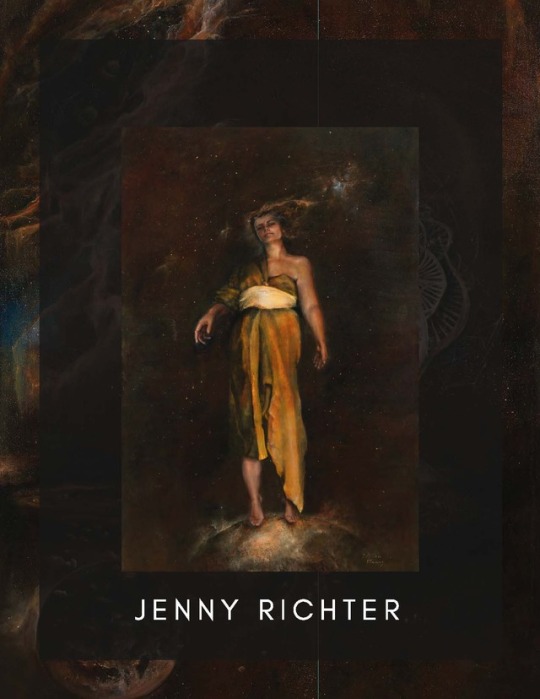
JENNY RICHTER interview in DESTIG Magazine
Tell us about yourself and background.
I was born in East Germany and while I belong to the last generation that has an active memory of growing up in Communism Germany I am glad it only lasted through my early childhood until it got broken down by The People. I value freedom and independence over everything. It is an interesting experience to see a system that crept into every aspect of daily life fall apart. I spend my wild years in post unification Berlin when the city was an adventure playground for
the Creatives, the Misfits and the Idealists. We had everything except for money. While Berlin marked the only time and place in my life where and when I felt truly at home I disconnected when I moved to a valley in the Dolomite Mountains/ Northern Italy to study wood carving. I now follow my former teachers on social platforms as they exhibit their amazing work worldwide. They are the best. I briefly studied with Odd Nerdrum who at the time I considered the last master and only person worth learning from. My time with him was short but I learned so much. I met my Philly husband in Berlin when he hired me to recreate the art deco- ornaments for a façade renovation he oversaw. We have that project documented on our website oldeworldcraft.com
So I came over to the States and moved in with my #1 man in Philadelphia in Germantown- of all places. I was born a painter as creating paintings is my true expression. Over the years I branched out and acquired many trades- a sculptor of wood, glass and elements (snow and sand) which gave me a solid understanding of proportions space and the geometry of beauty, a contractor specialized in decorative plasters and ornamental façade restorations which taught me to be of service with humility and discipline as well as a highly trained hypnotherapist which gives me the ability to disable the perception filter of my mind and connect to my subconscious as well as our collective consciousness. This rather unusual multi-layered set of skills now serves as my foundation to create art pieces that go further than being a visual product.
Tell us about your work.
My work simultaneously seeks and provides understanding. My pieces are little messages from our collective to ourselves created through me.
I tap into my personal core to deliver images that tell a universal story. I hope for people who see my images to recognize something familiar, a fraction of their memory of their deeper nature to be triggered.
What makes your work and approach unique?
I have arrived at a point in my life where I no longer am consumed by pointless beliefs, patterns or desires that still seem attractive in our society.
I understand that I solely exist to observe, create and ultimately remember. This gives me and my work value and meaning.
Why is your work a good investment?
In these times where we experience an overwhelming flood of noise and imagery it is important to emphasize and value content. We all seek value and we feel the need to proof our own. It can be seductive to do so through external accessories. Instead we need to value our humanness over everything.
We are vulnerable creatures of infinite potential. My work is a contribution and an element of our Zeitgeist. It plugs into the current segment of our timeline but exists beyond it. When you invest in a piece of art it is important to evaluate the piece beyond its current time, it has to be strong enough to stand beside pieces of the past and the future.
Tell us about some of your achievements.
My website www.jennyrichter.com is a sufficient reference for my creations and projects. What I really feel is an accomplishment though is the clarity and independence I have gained through years of solitude. I could not have shared my work at an earlier point as I would have gotten attached to the need of being validated by others. I am also proud that my husband and I have created a solid life foundation for our best creation- 2 little Padawans- while we both came from broken families and started with nothing. Raising kids means your focus shifts from being the center of your own universe to constantly prioritizing another being. So instead of living in the creative flow I have to micro-organize and live with a tight schedule. As someone who highly values independence, alone time and pondering about the bigger things this is hard and I am proud I am doing it.
What are your sources of inspiration?
My ideas spawn inside my head and then take on a life of their own. I got this line of images in my head that are waiting for their turn. Because I have a very finite amount of time available raising 2 young kids I constantly need to prioritize. Some images have been waiting for years, others squeeze in and give me this urge so they get bumped up and turned into an art piece right away. It can be a teensy moment or feeling that triggers an entire image creation and I often have to catch up on fully grasping its meaning myself.
What you are passionate about?
I see our civilization standing at a decisive dividing point of power distribution. The proclivity how we transfer power within the macro structures of our society lies within the micro tendency to transfer our personal power. Politically we are witnessing a tuck a war between corporate capability to claim and distribute resources while creating dependency versus a movement of social activism working towards a humane and fair distribution of resources creating an upgraded society of unbound individuals. Personally I am convinced that our monopolized power hierarchies will eventually fail because they aren’t viable and therefor will no longer serve us. However an upgrade to a society of sovereign individuals starts with questioning why we are afraid of our own sovereignty.
Why do we prefer to outsource our personal power by handing over our responsibilities? Why authorize our religious leaders to hold power over our own spiritual journey or commission doctors to be in full charge of our healing journey?
Why do we determine our worth by our material amassment or our lovability by how much we (or our social media avatars) are being validated by others?
The biggest power we possess is our attention. What we pay attention to we validate. That is why I hope my artwork contributes a little part to bringing more attention to the vast nature of our being, to trigger self-reflection and focus onto the magic of our reality. Thank you for Your attention.
More images from this interview: https://www.destig.com/richter.html
Website: jennyrichter.com
0 notes